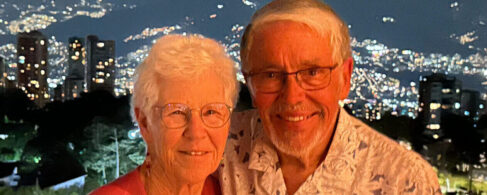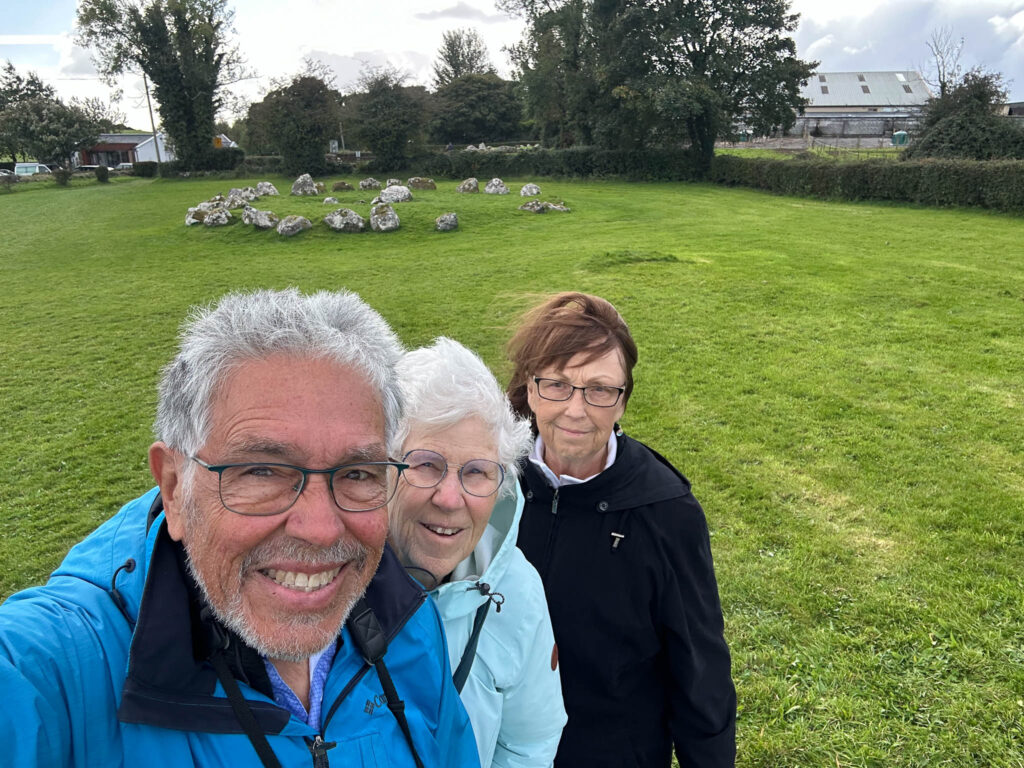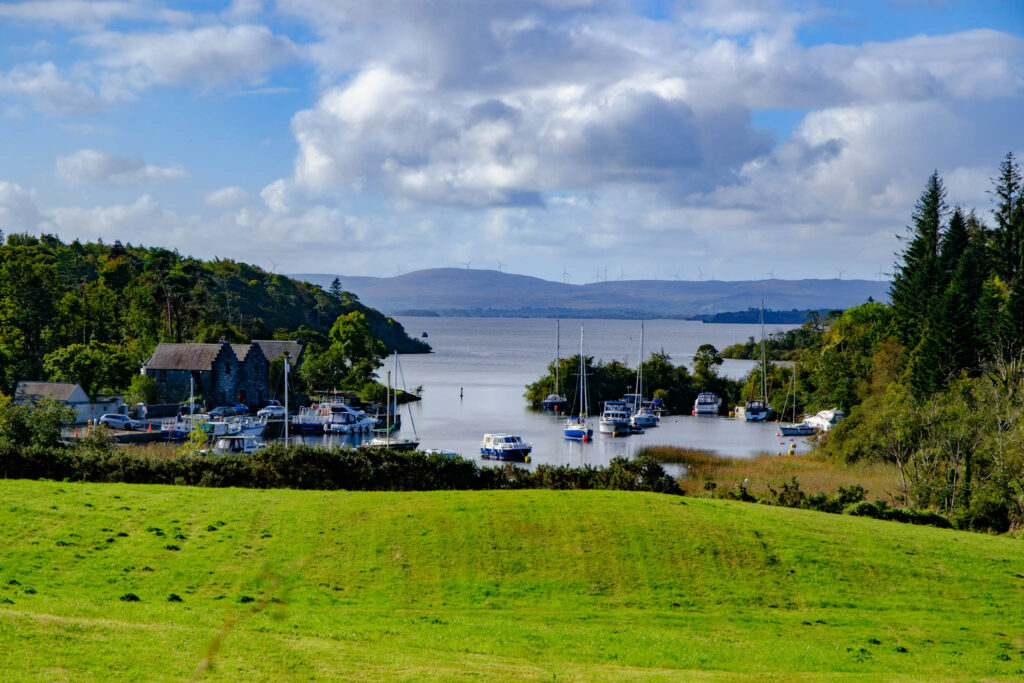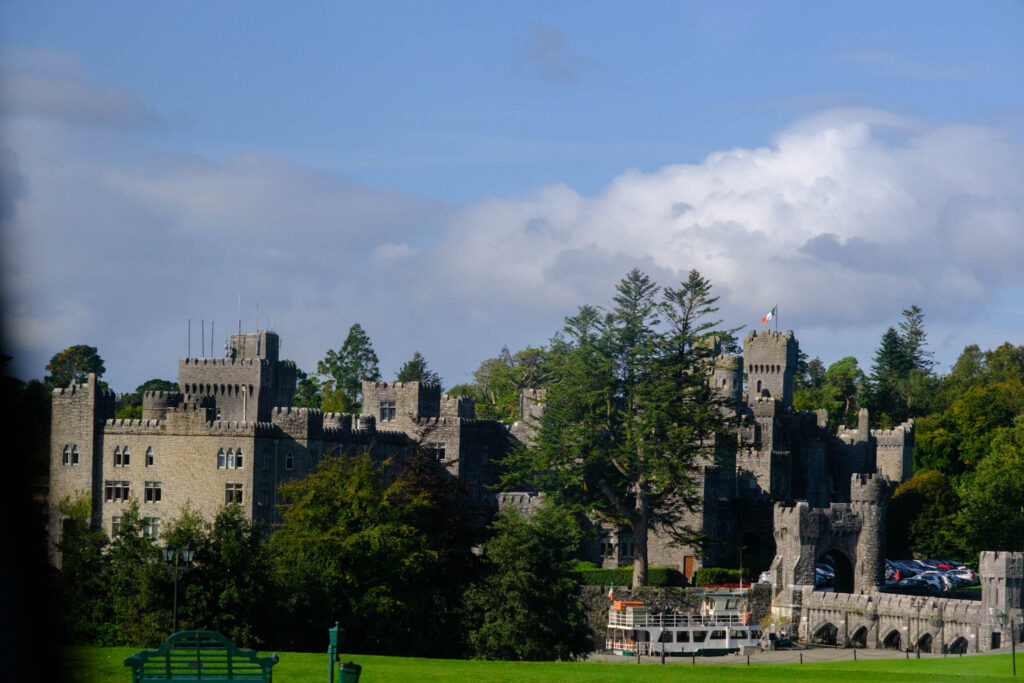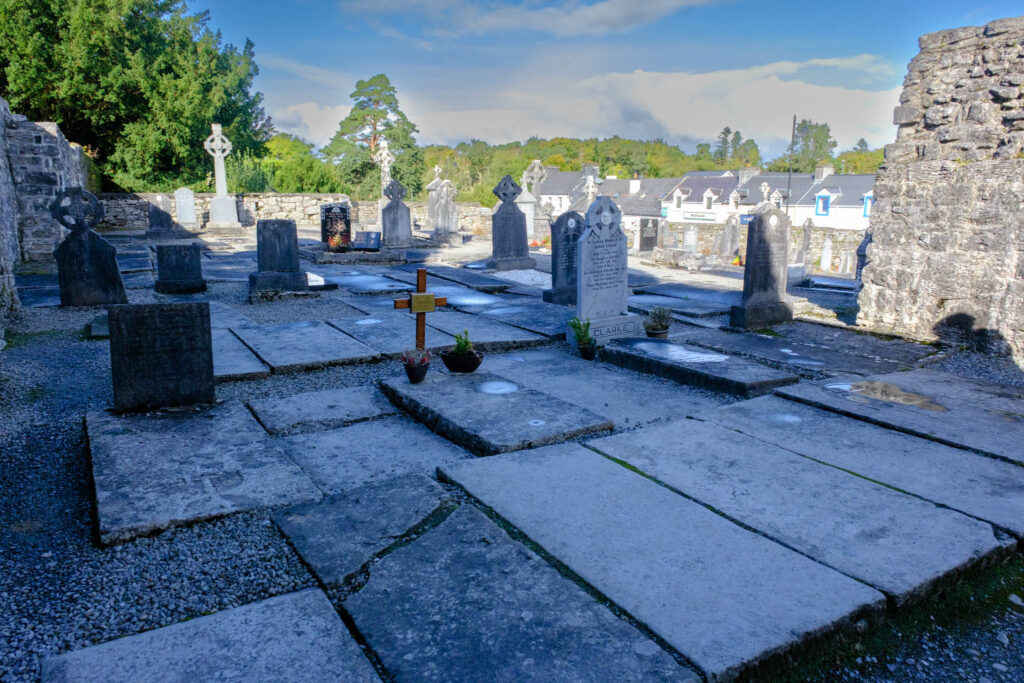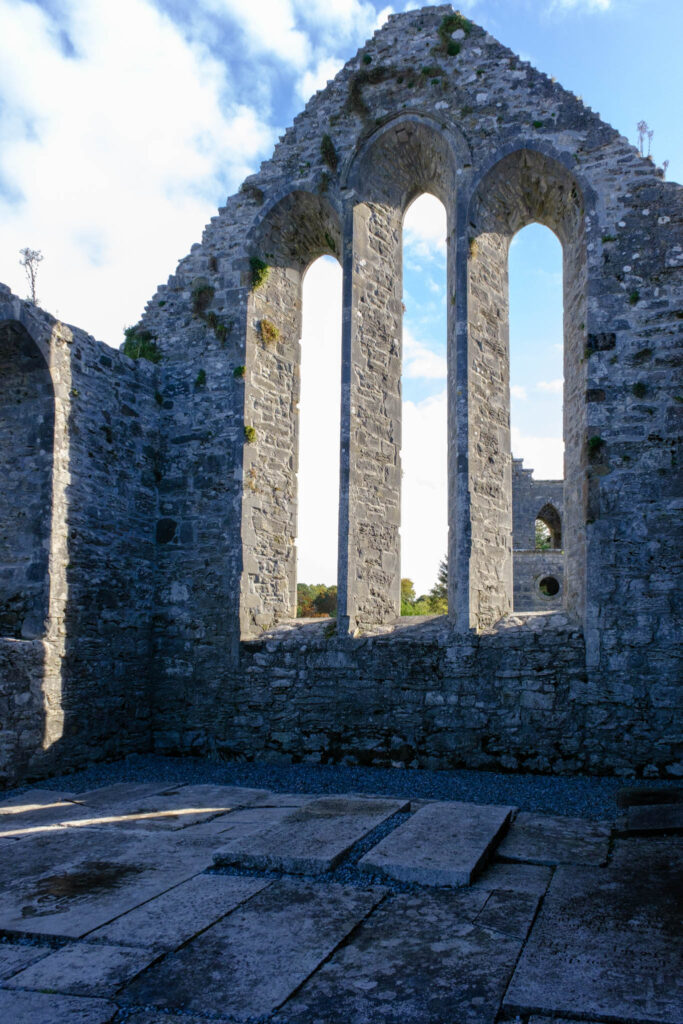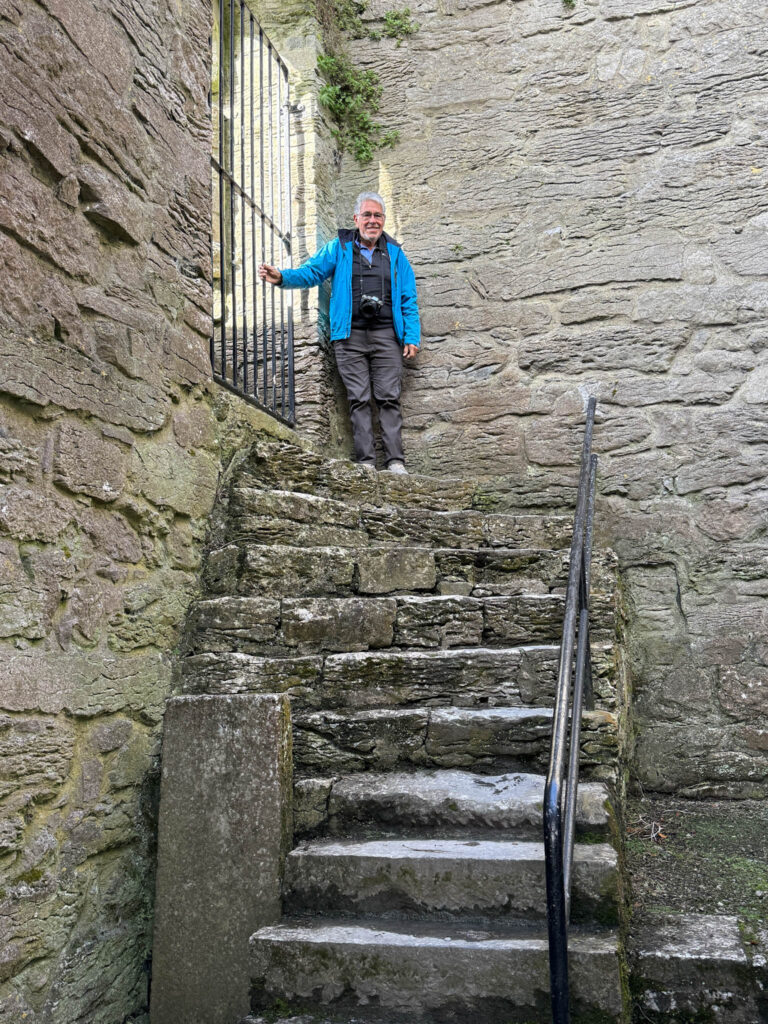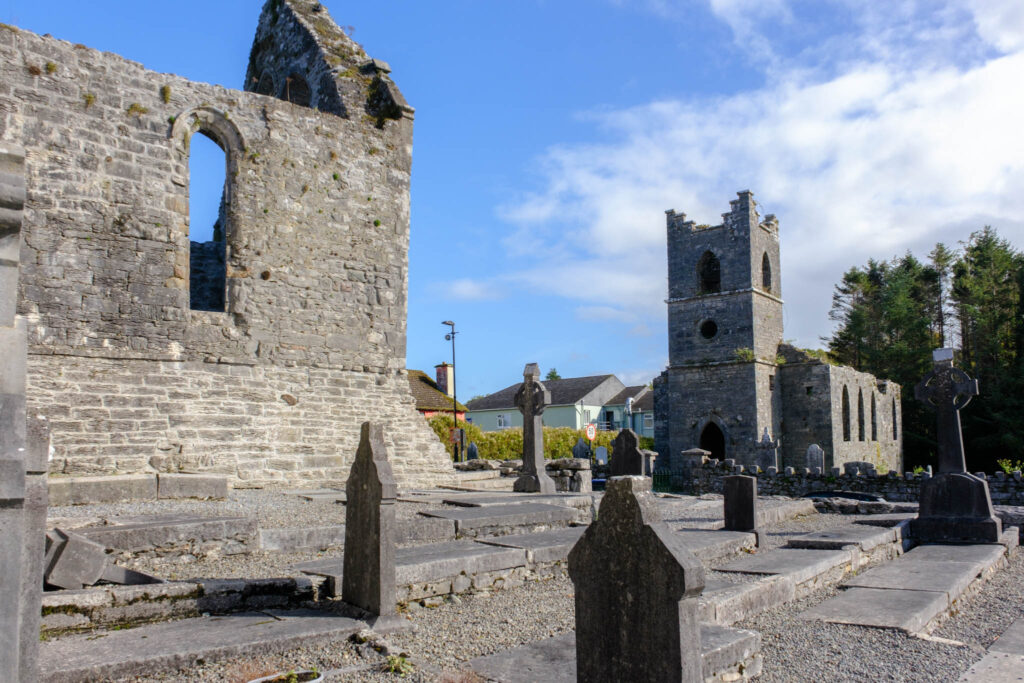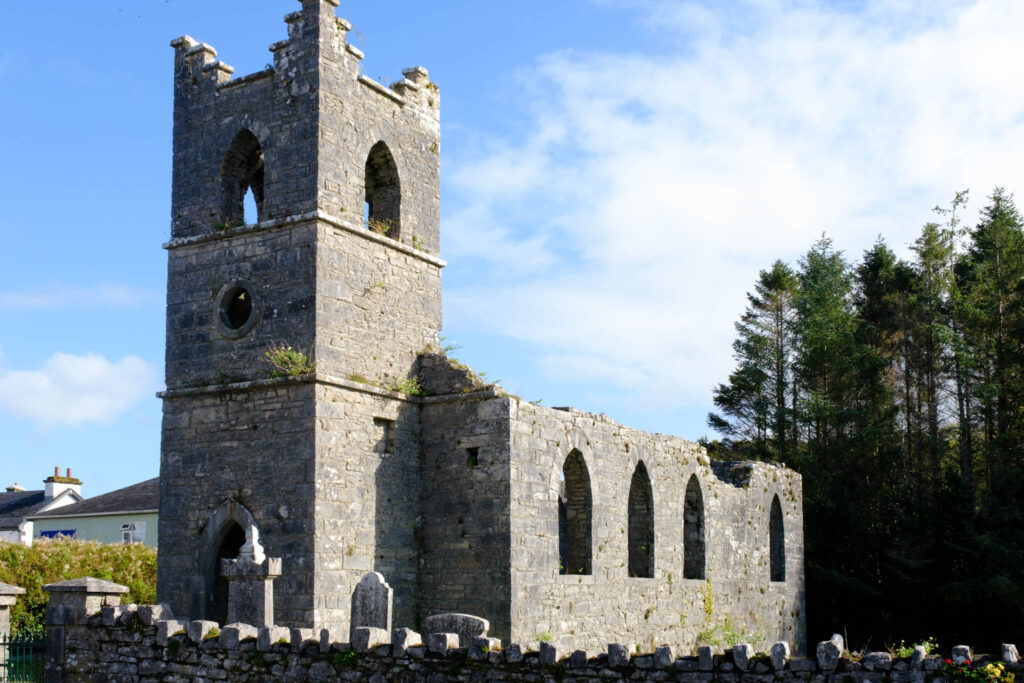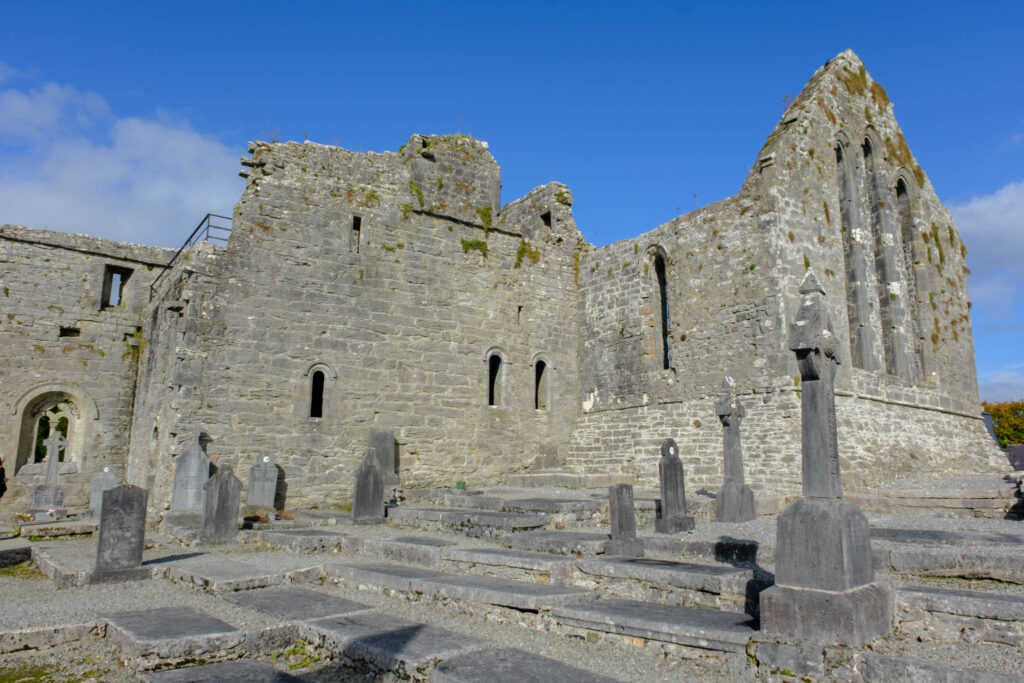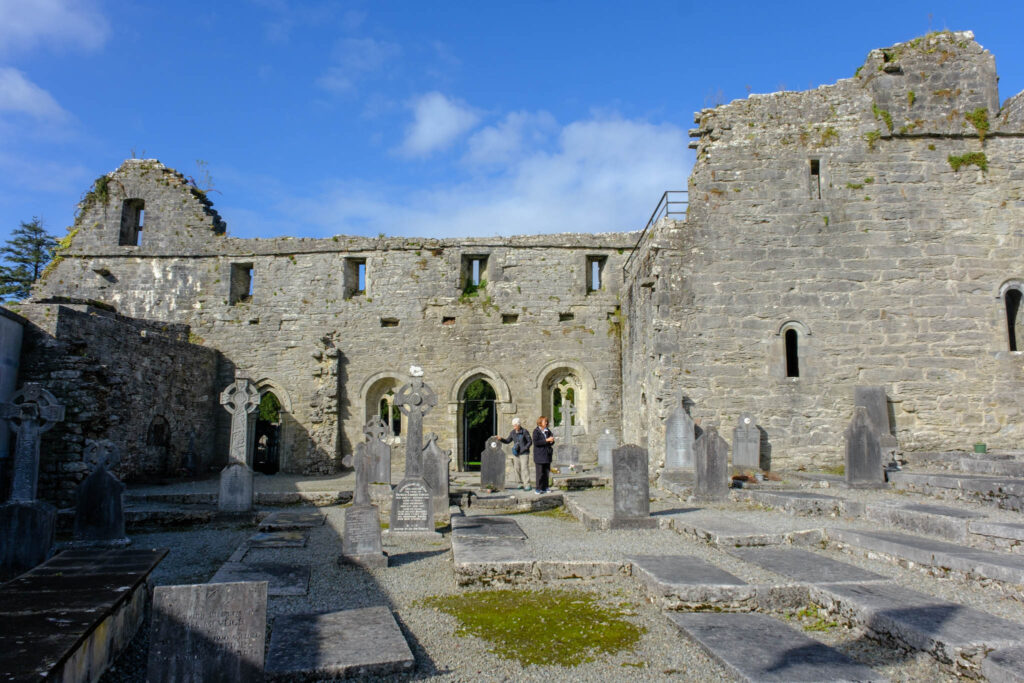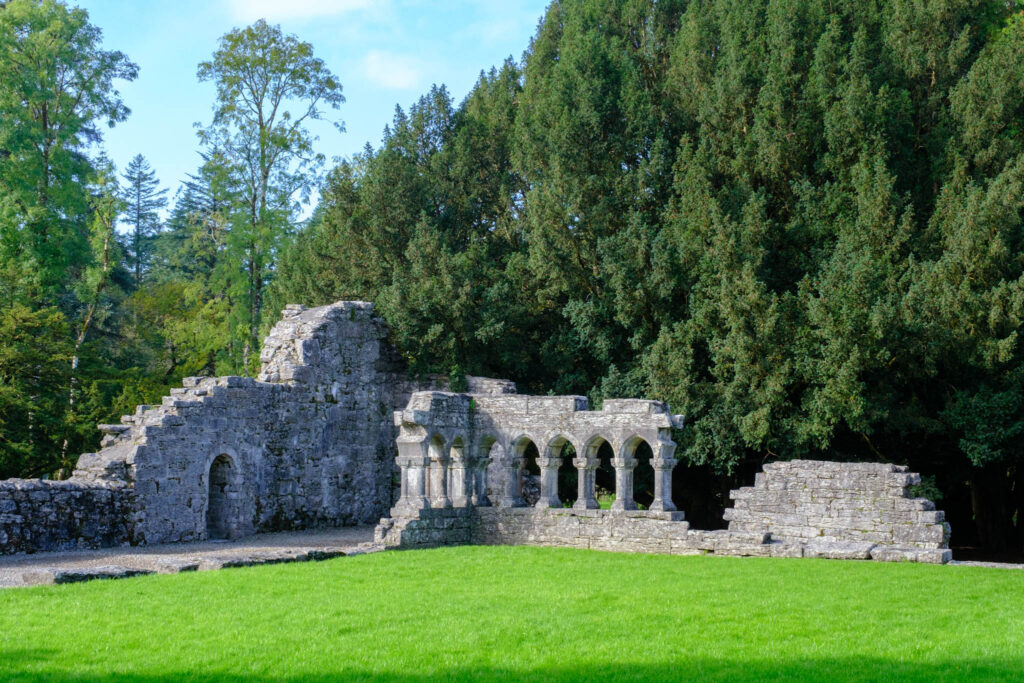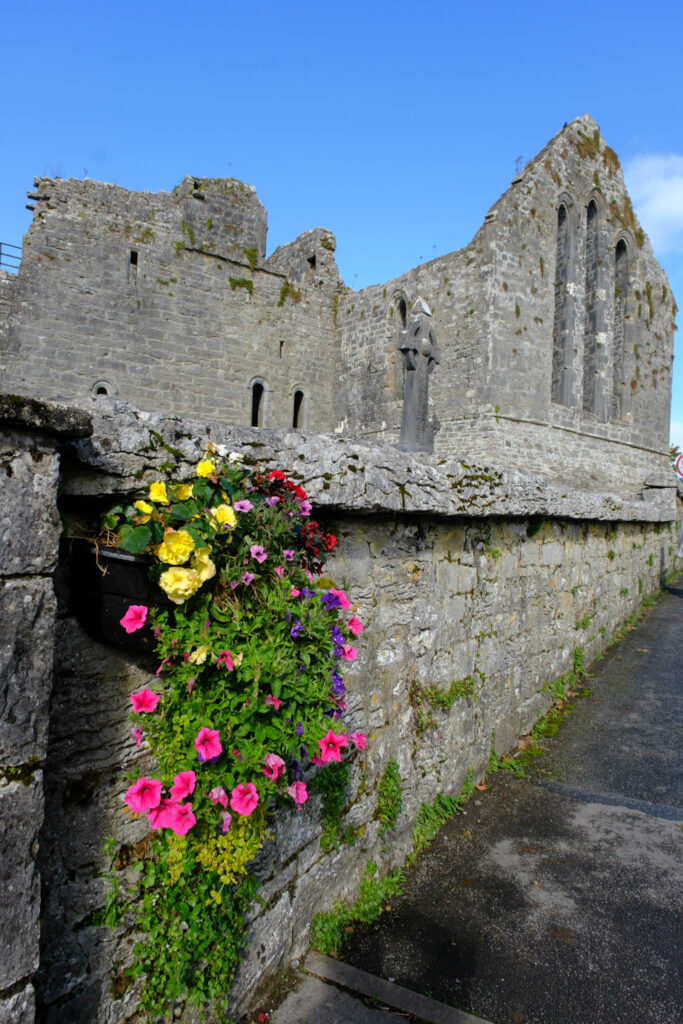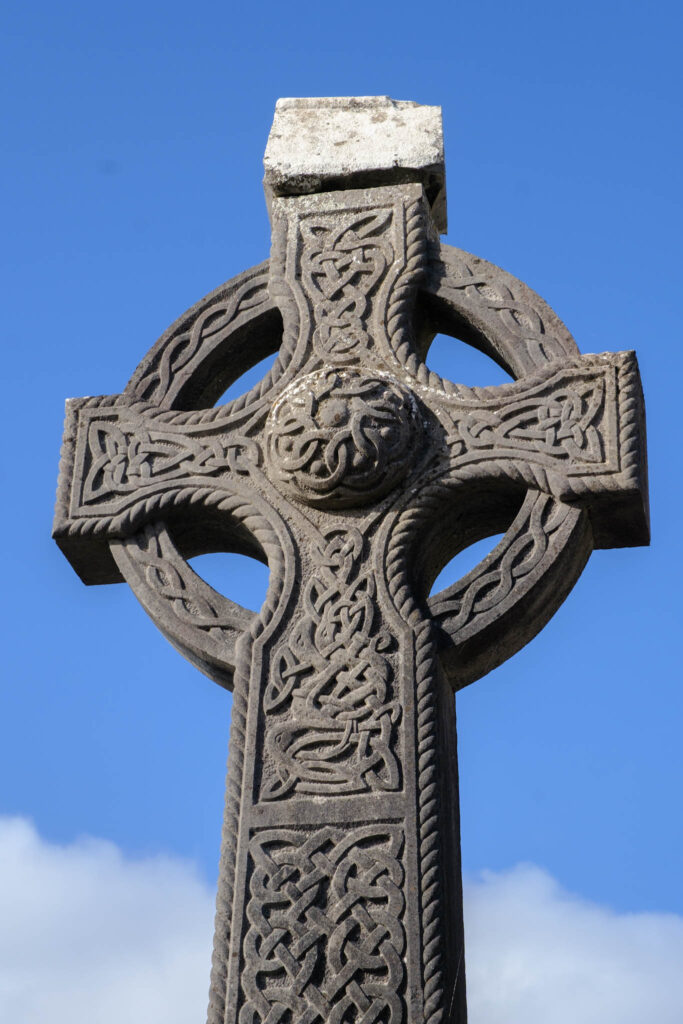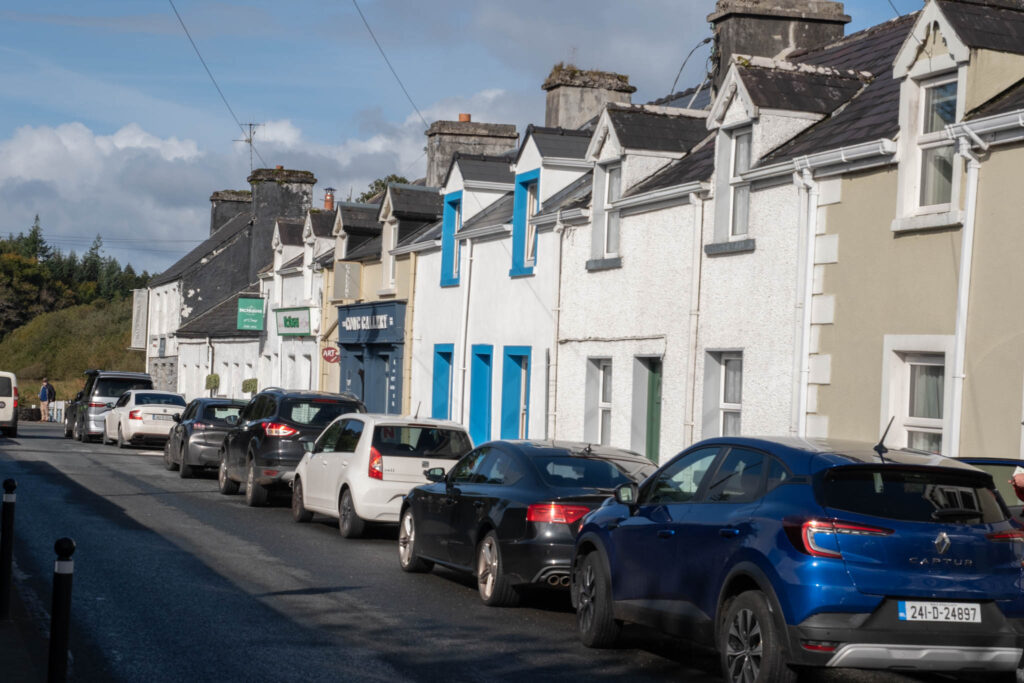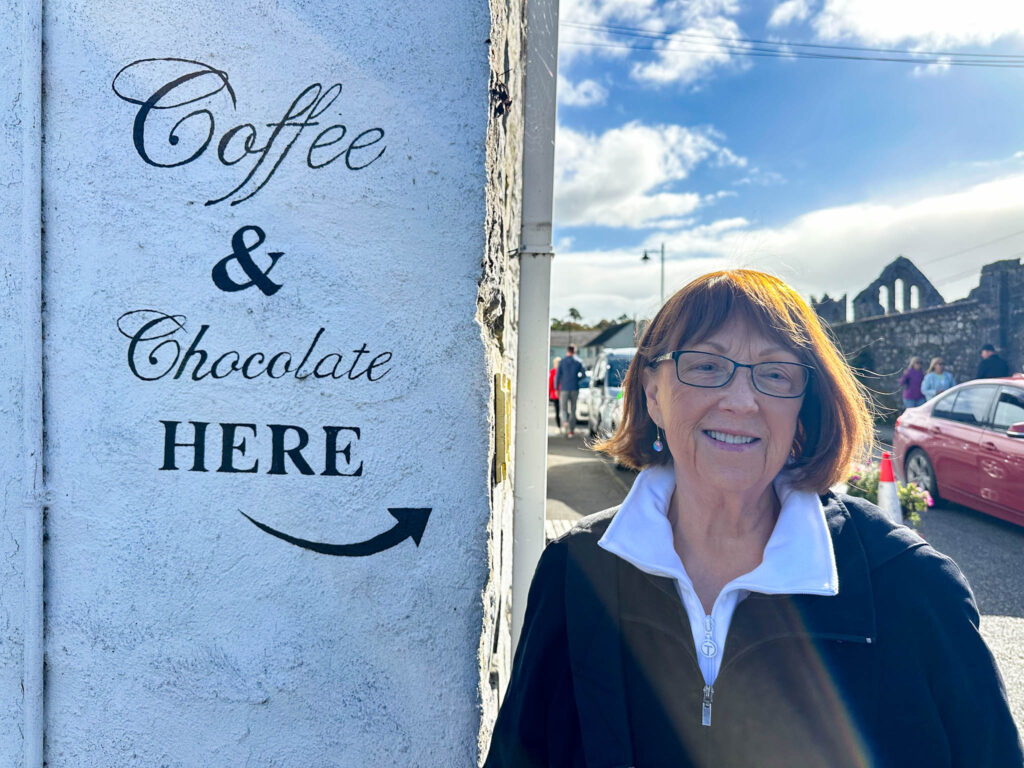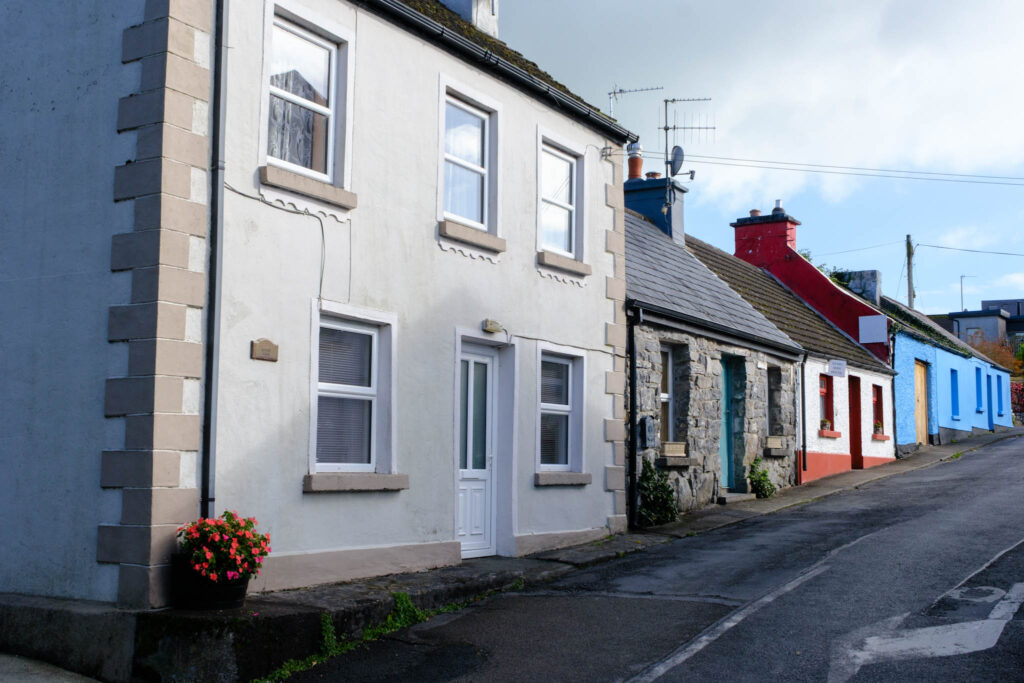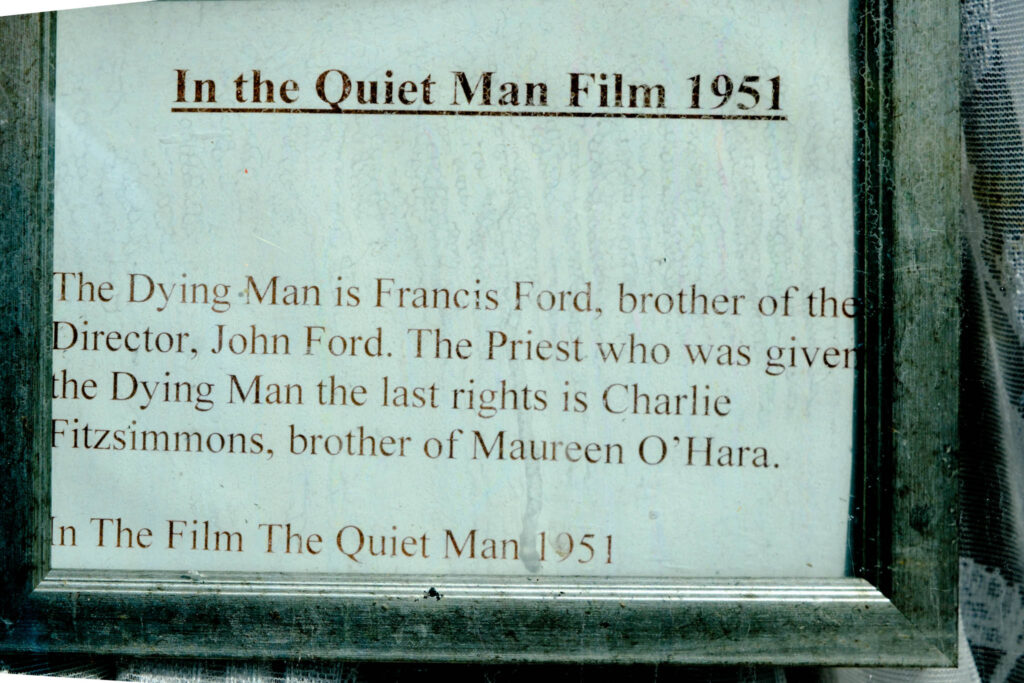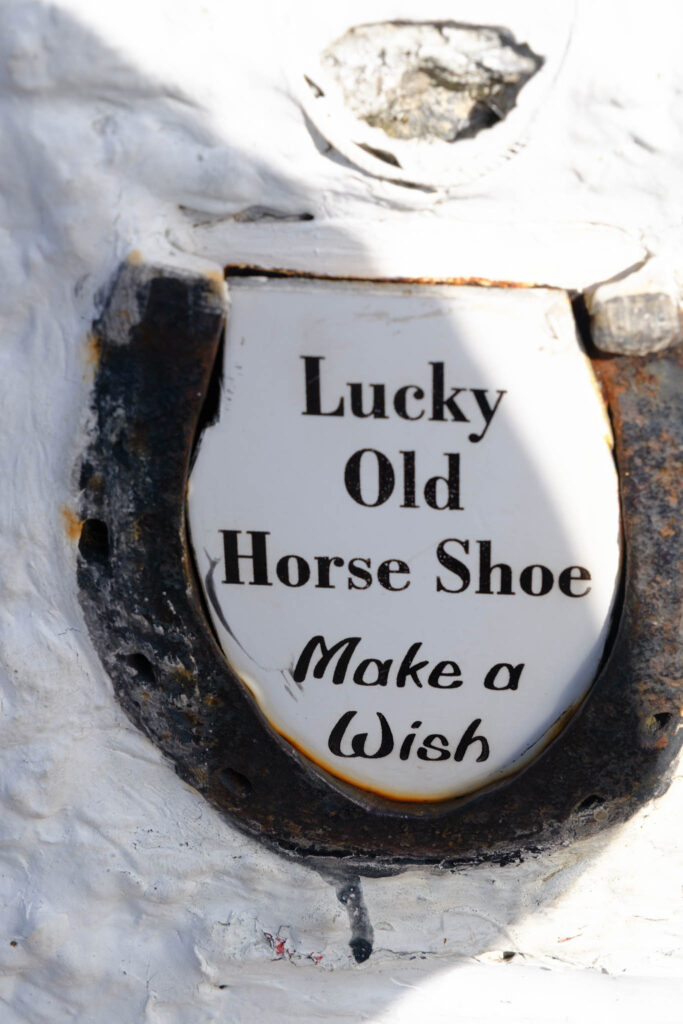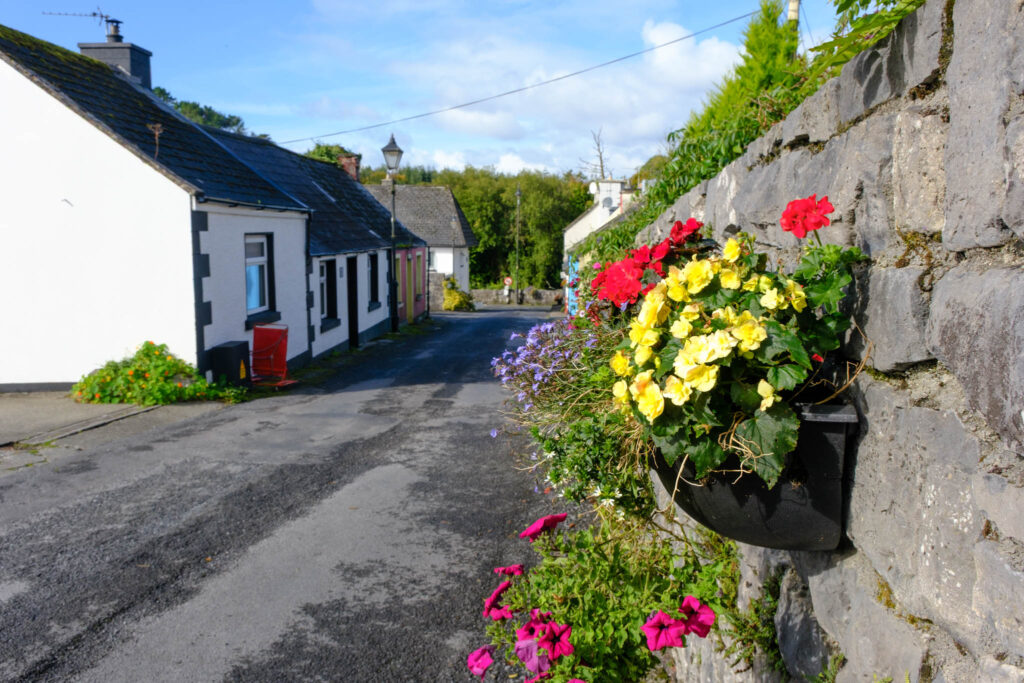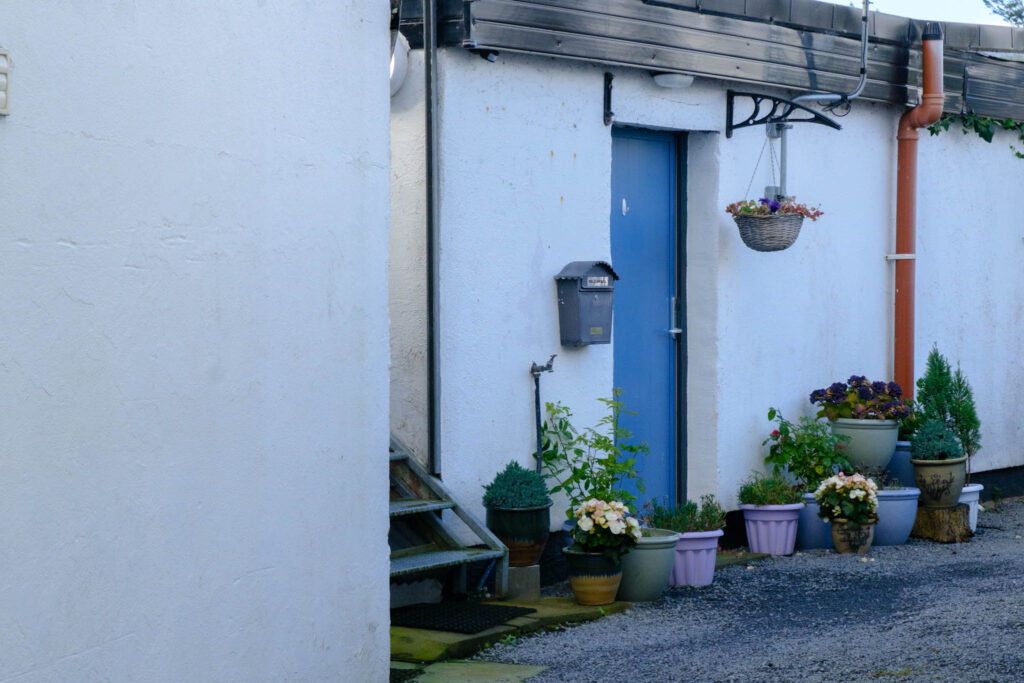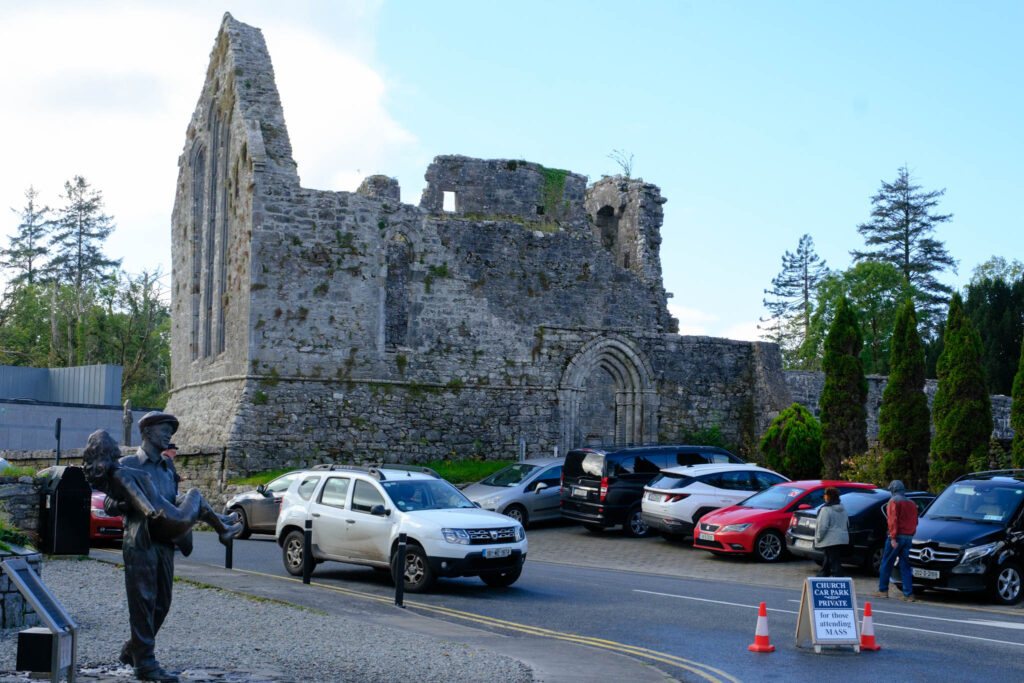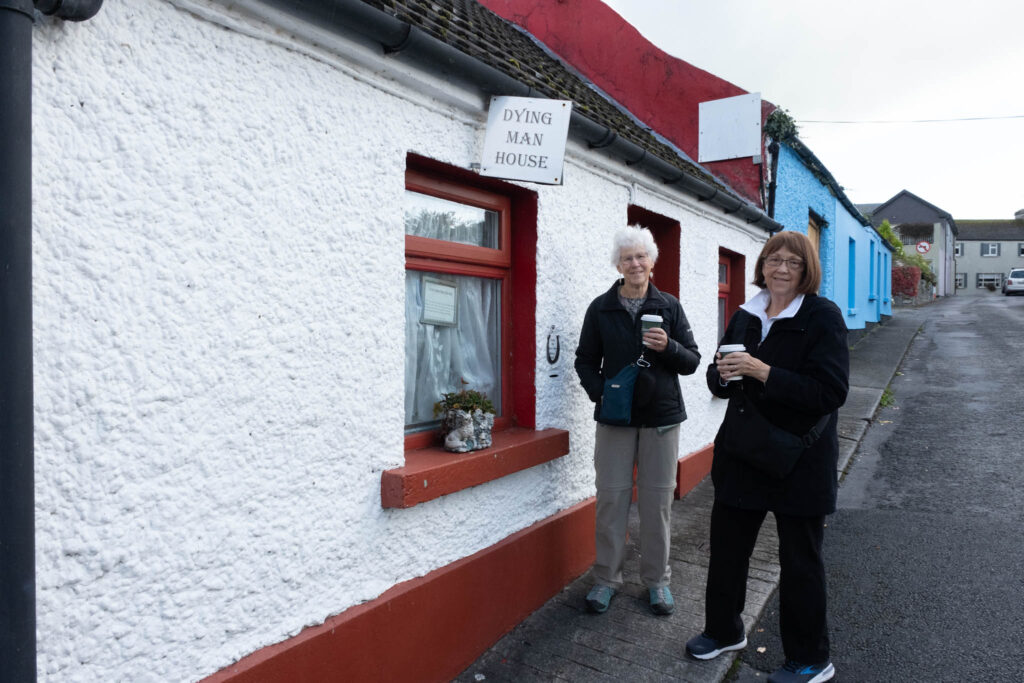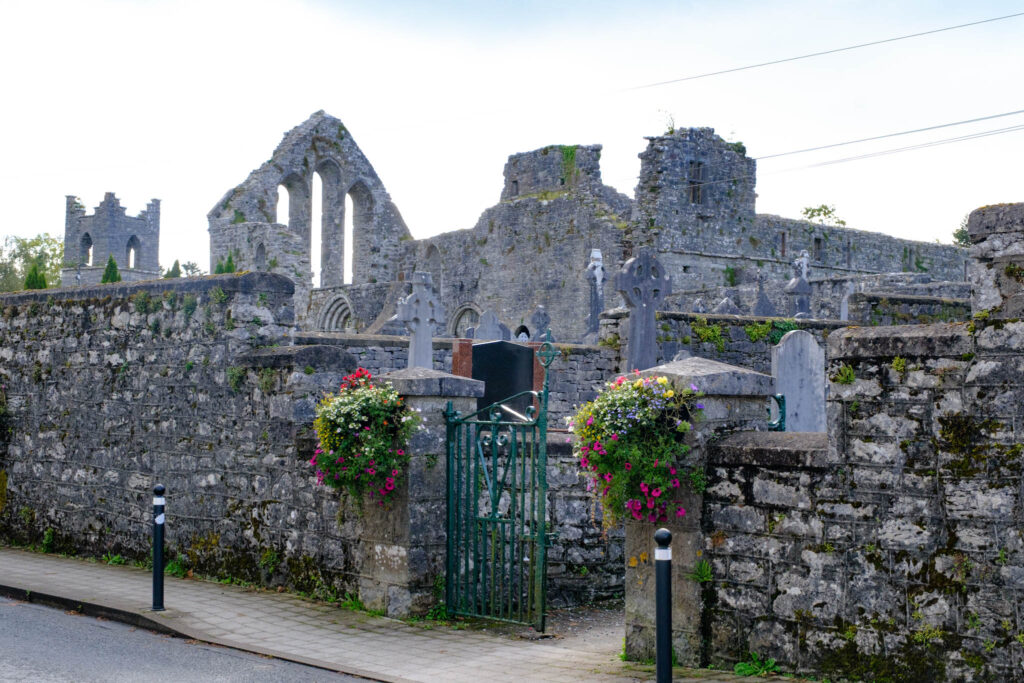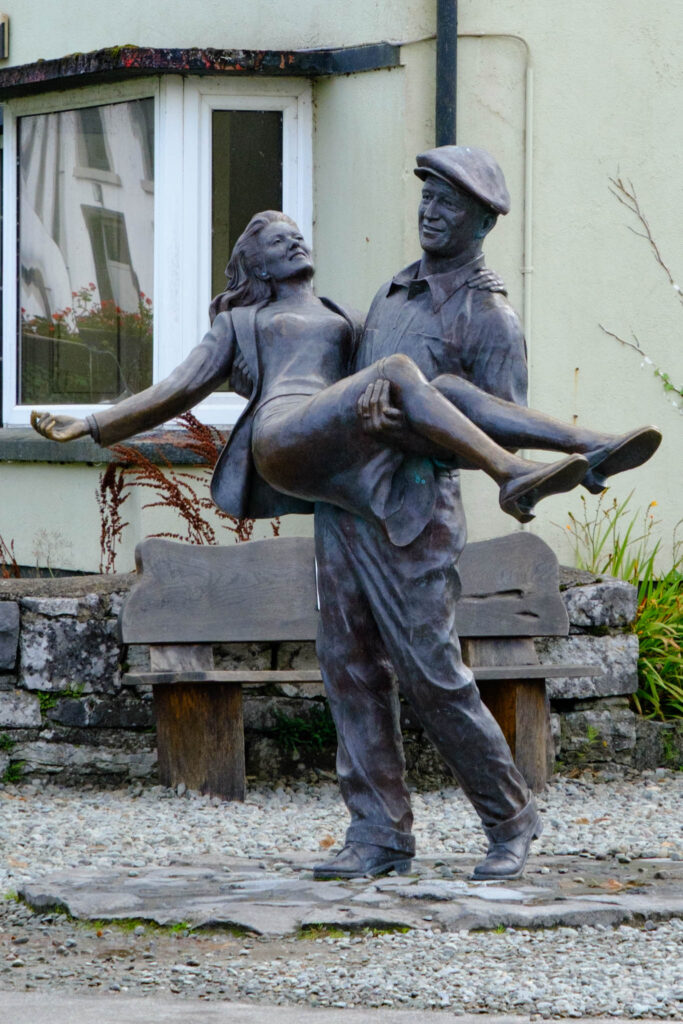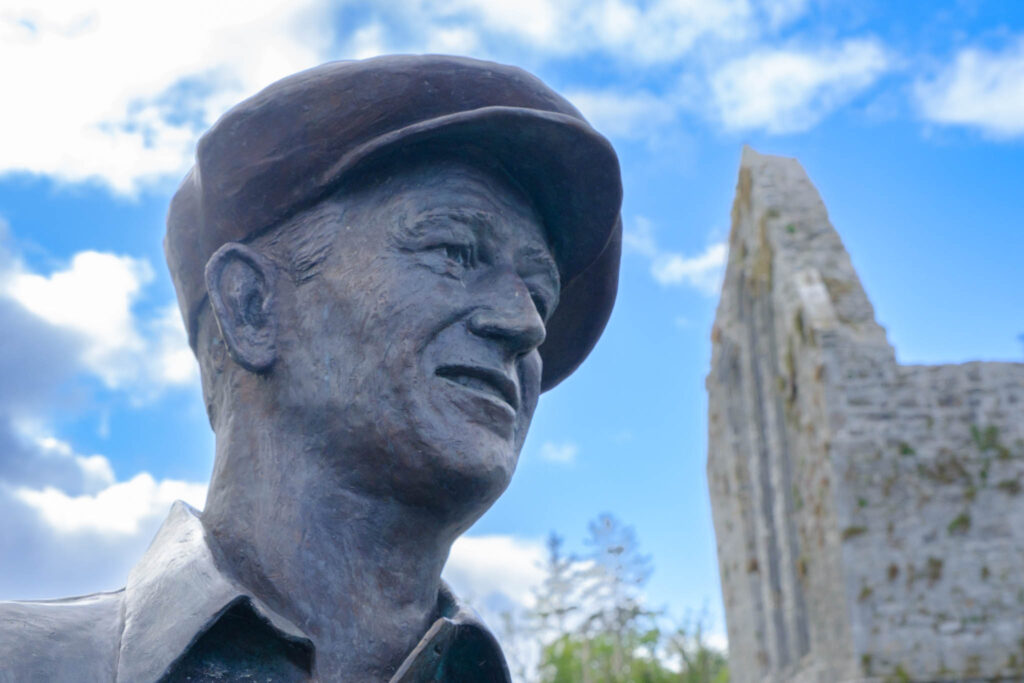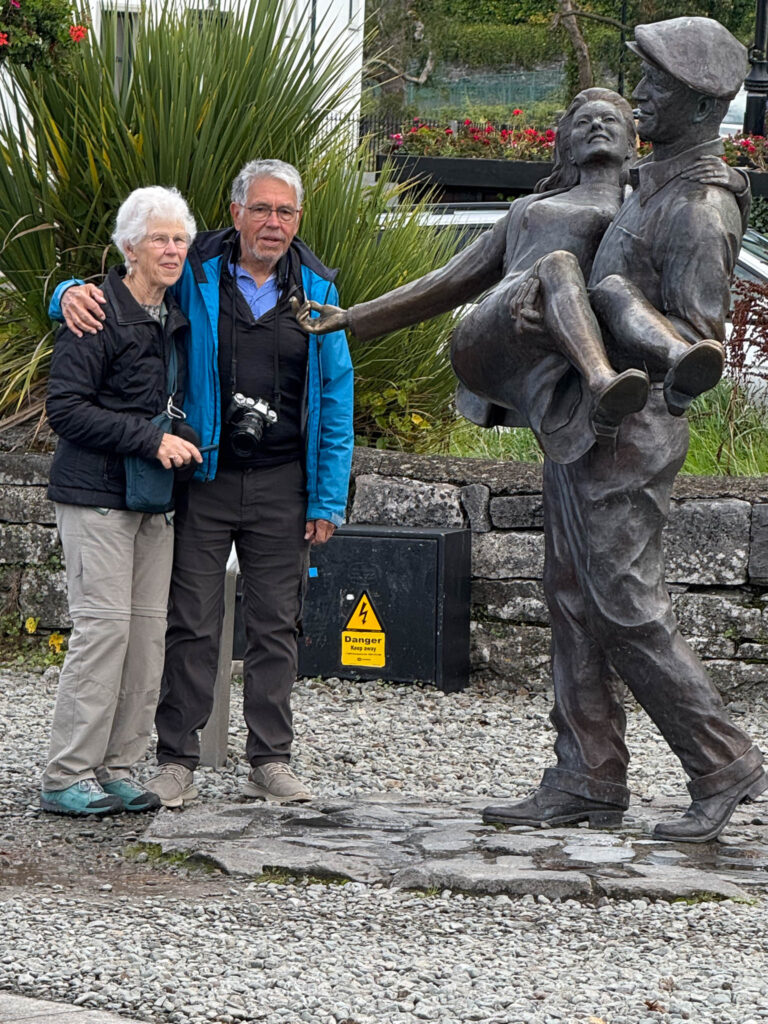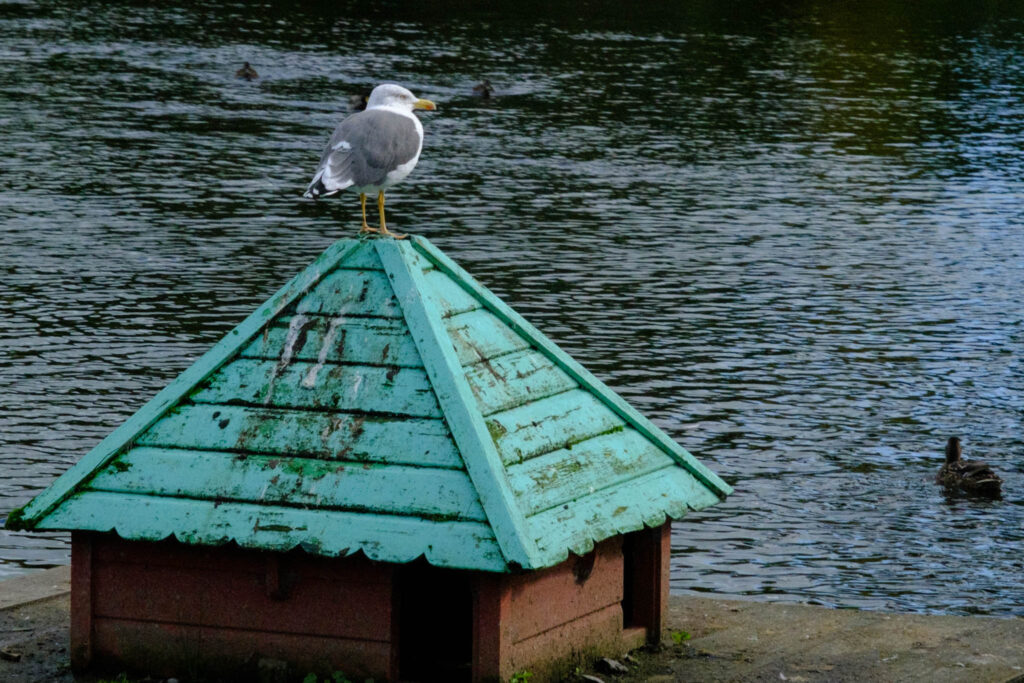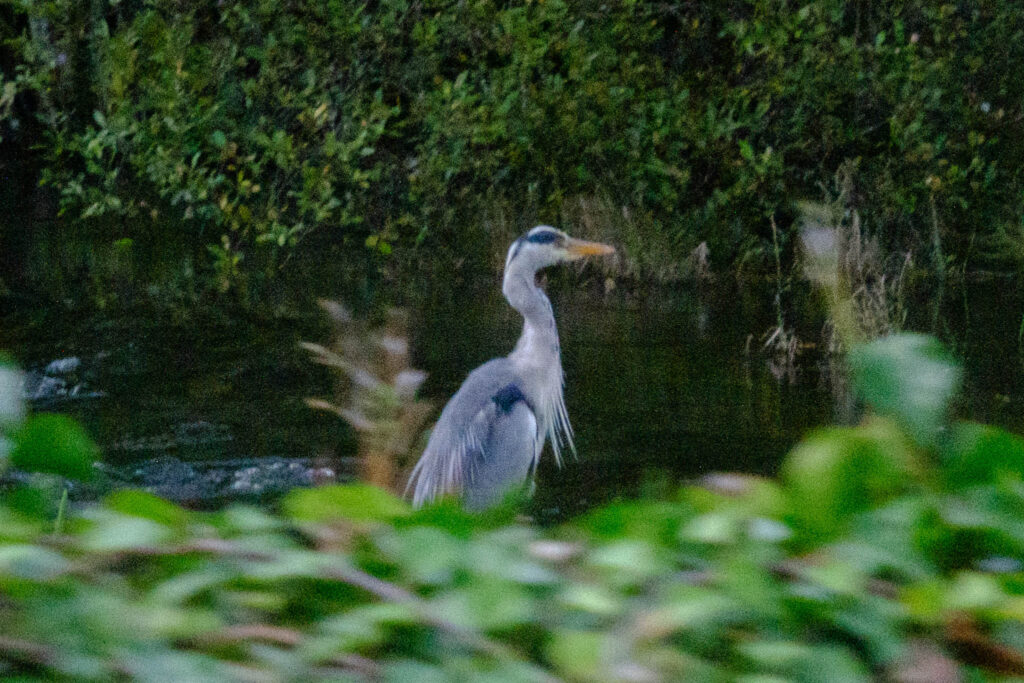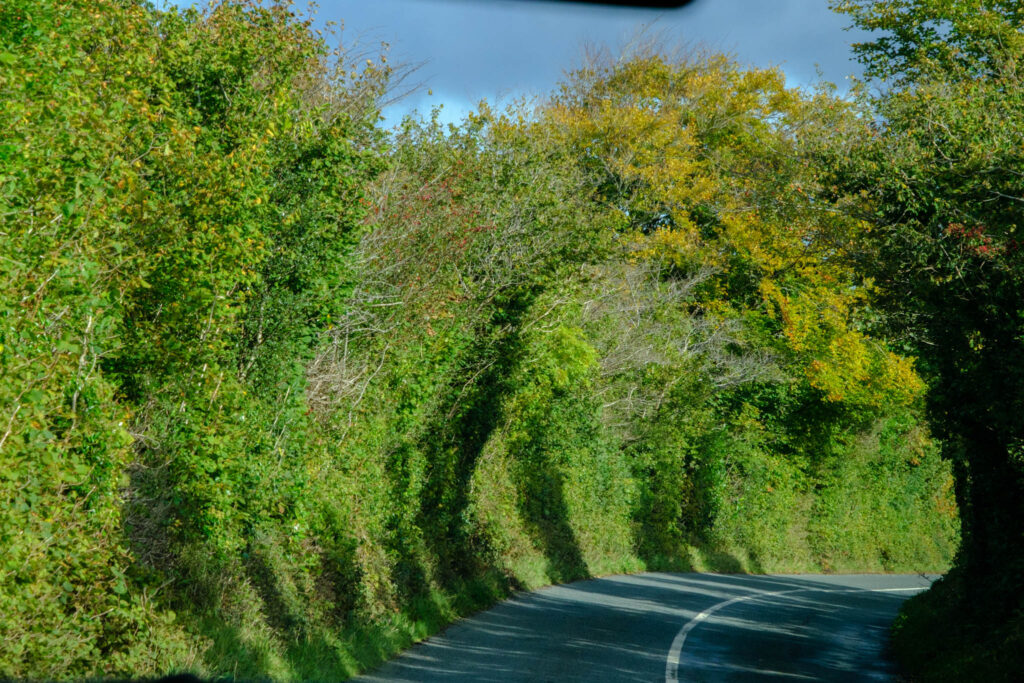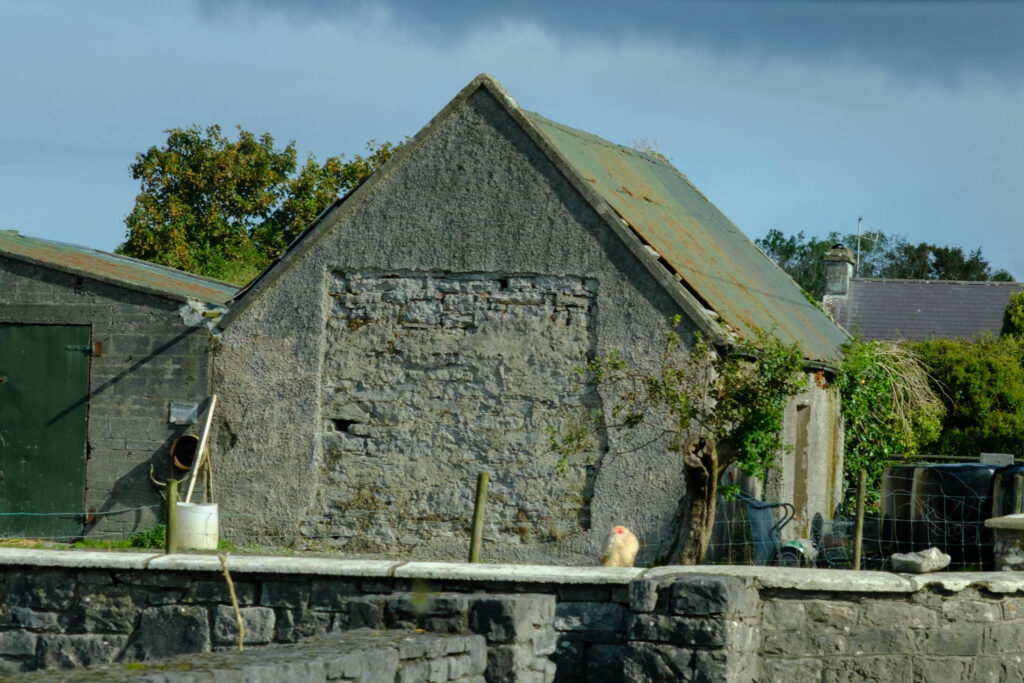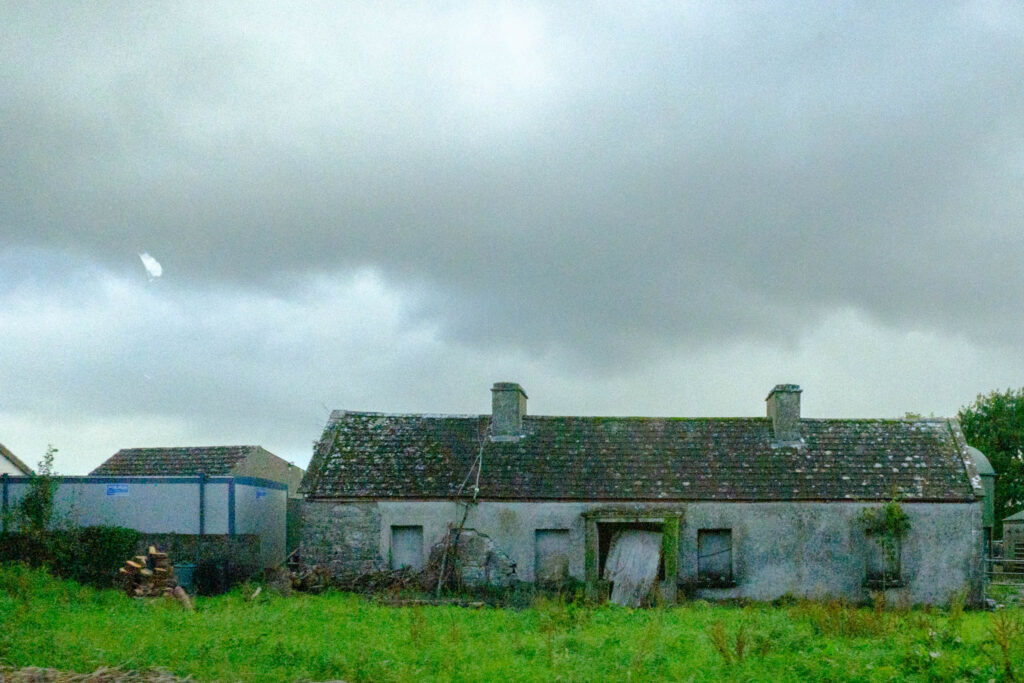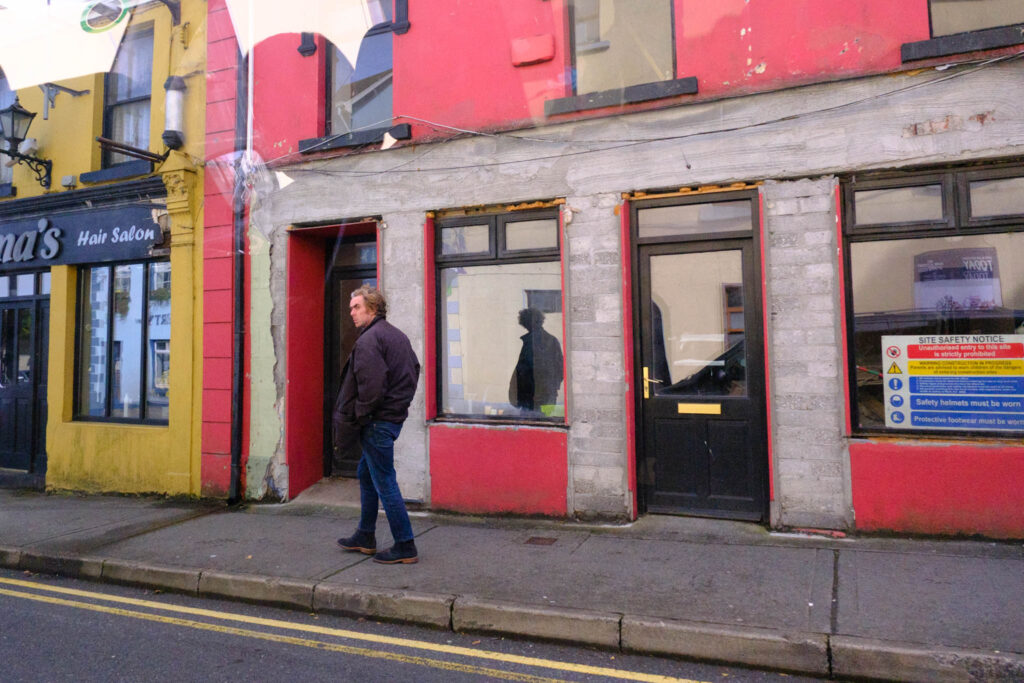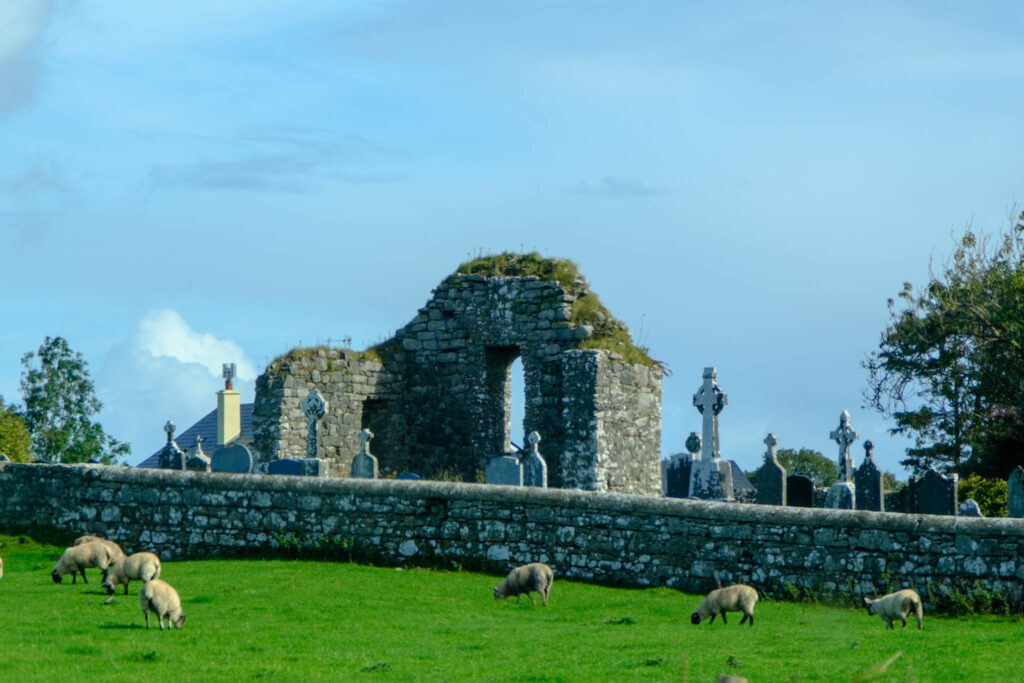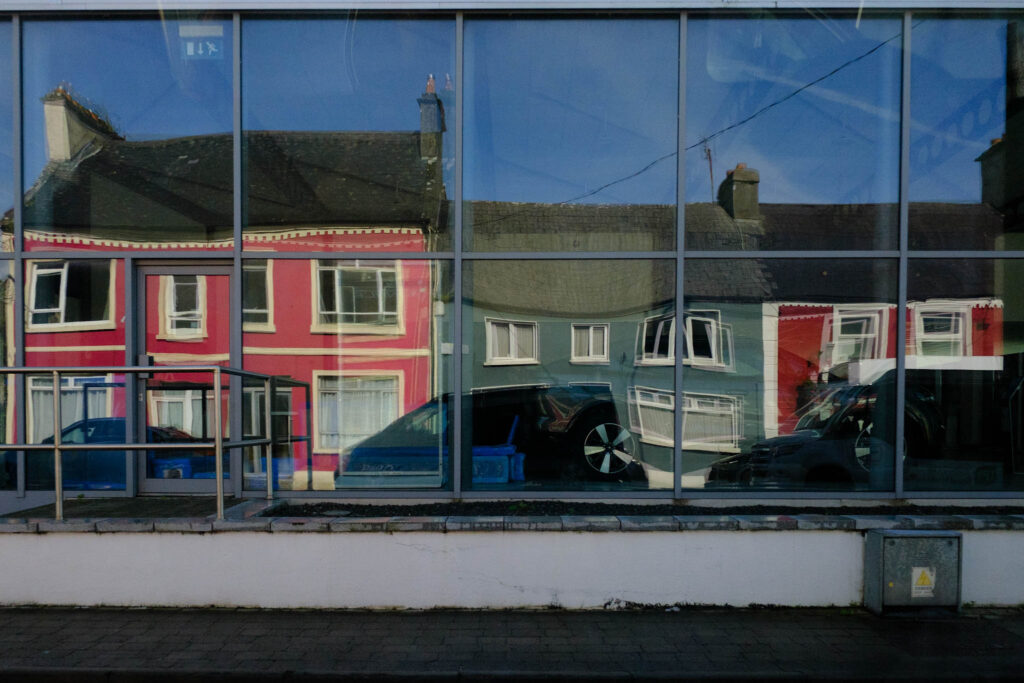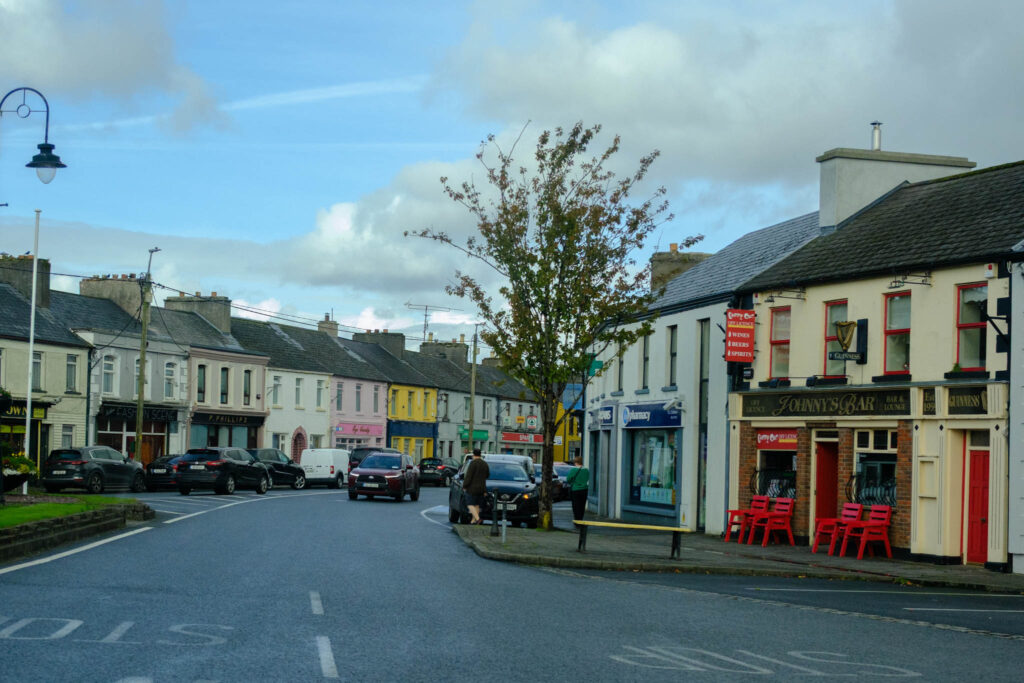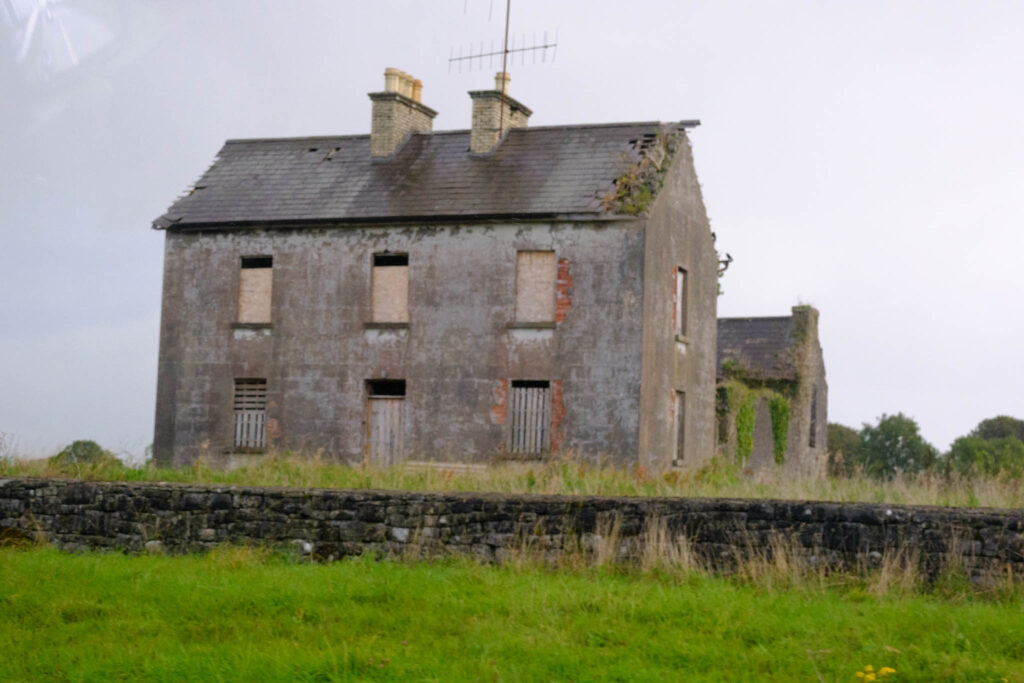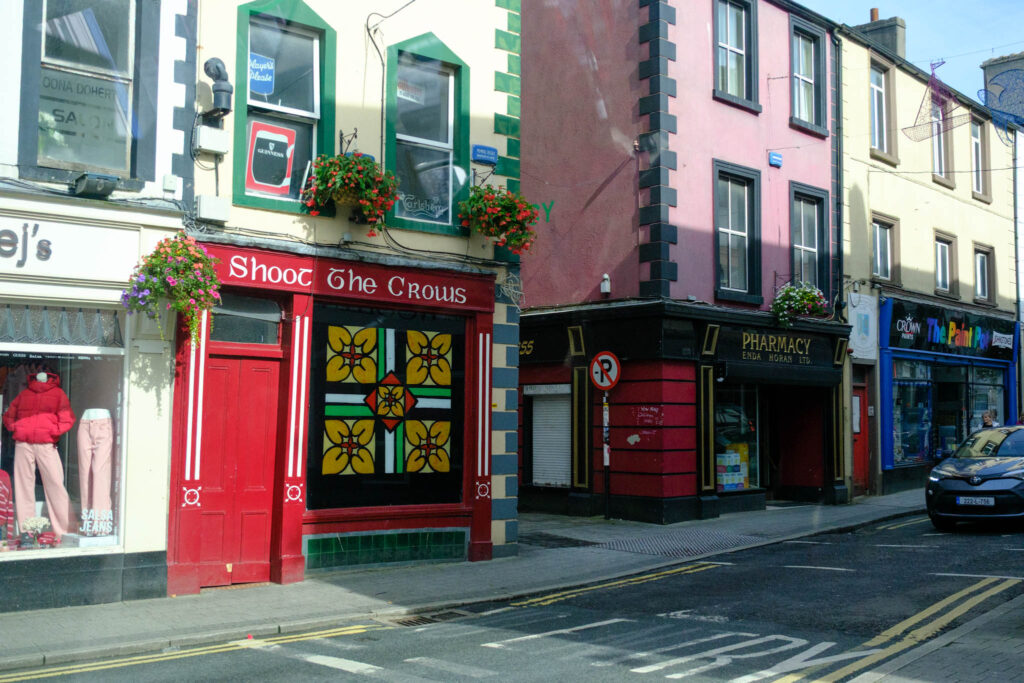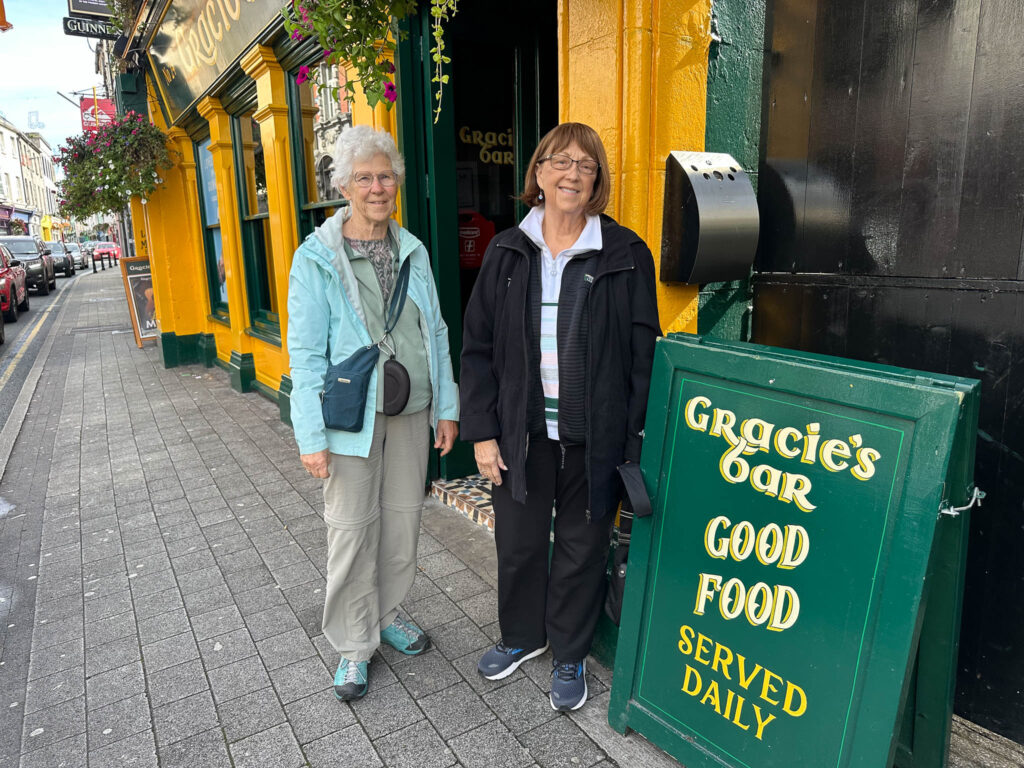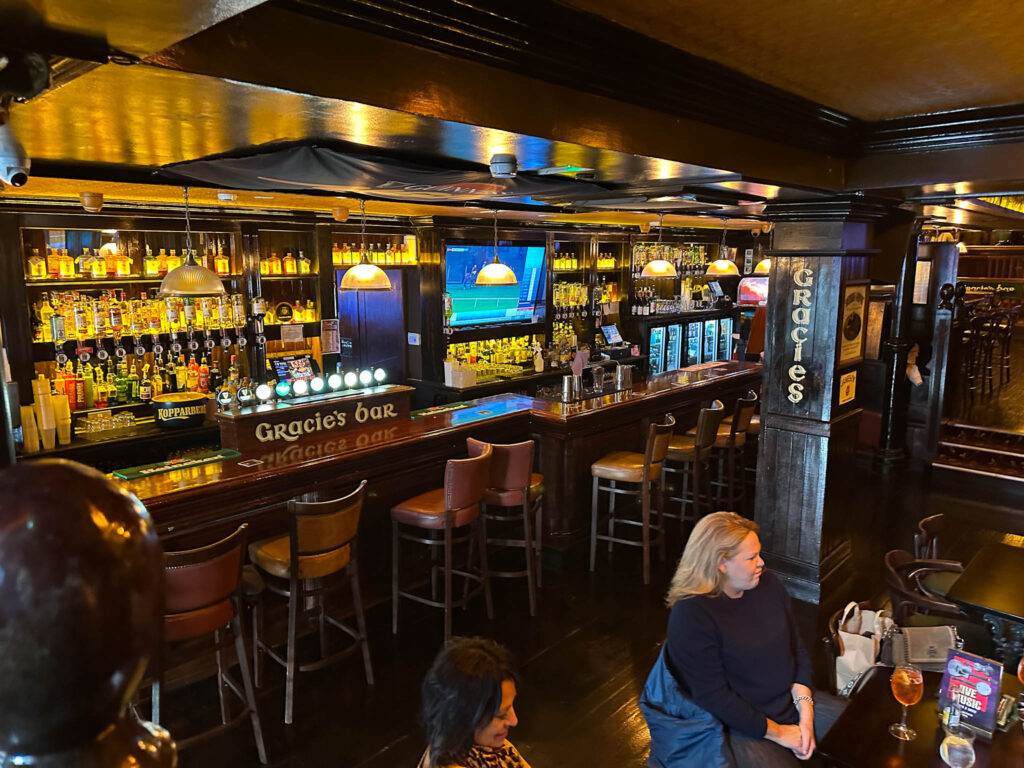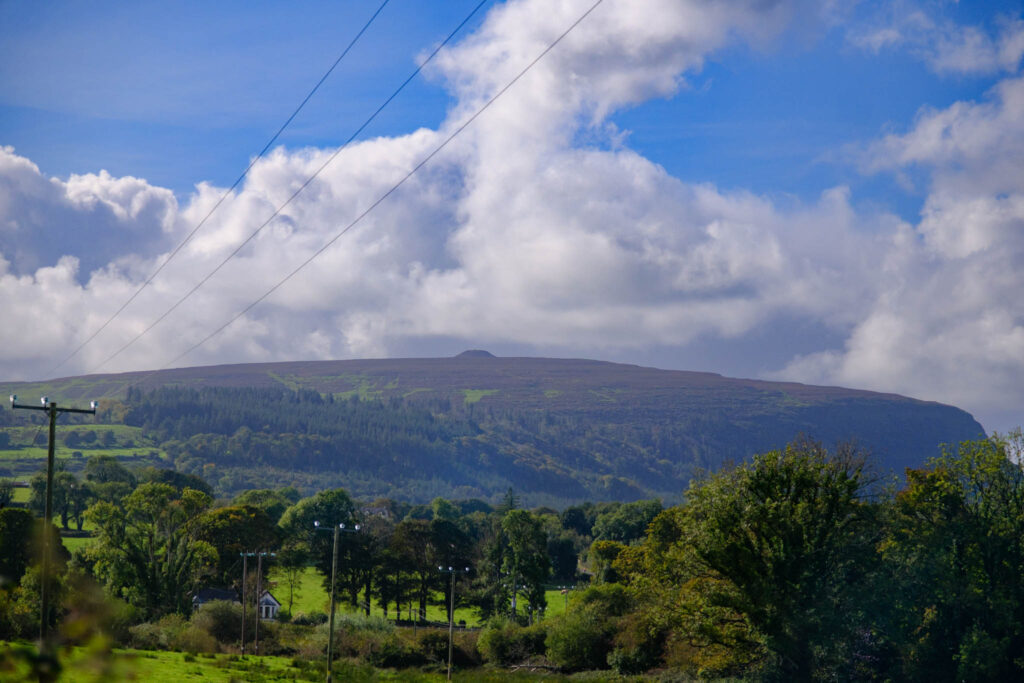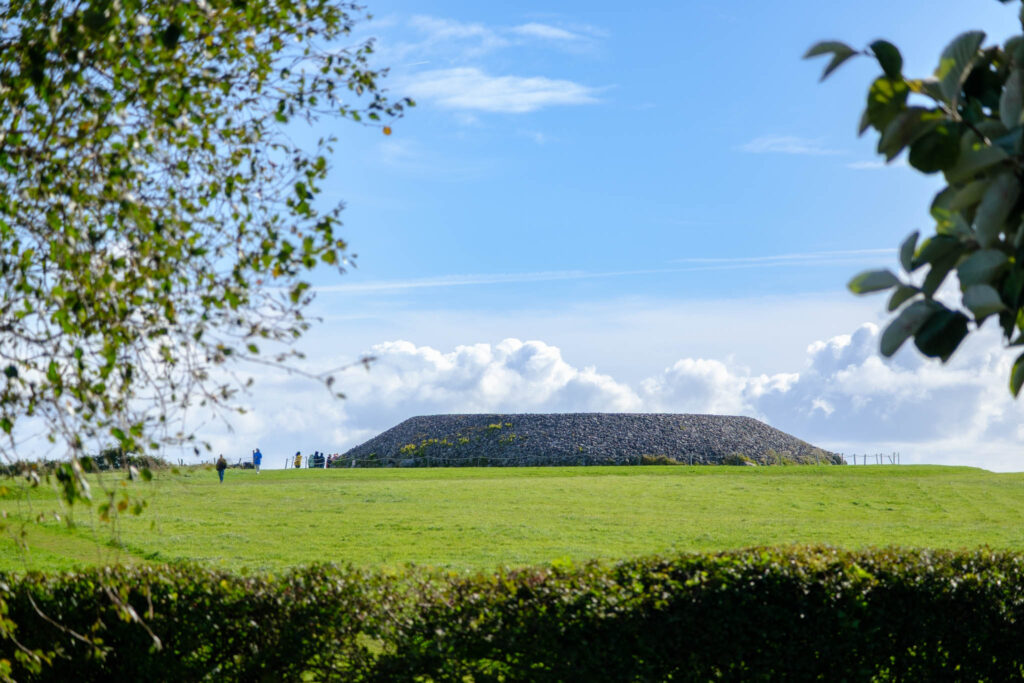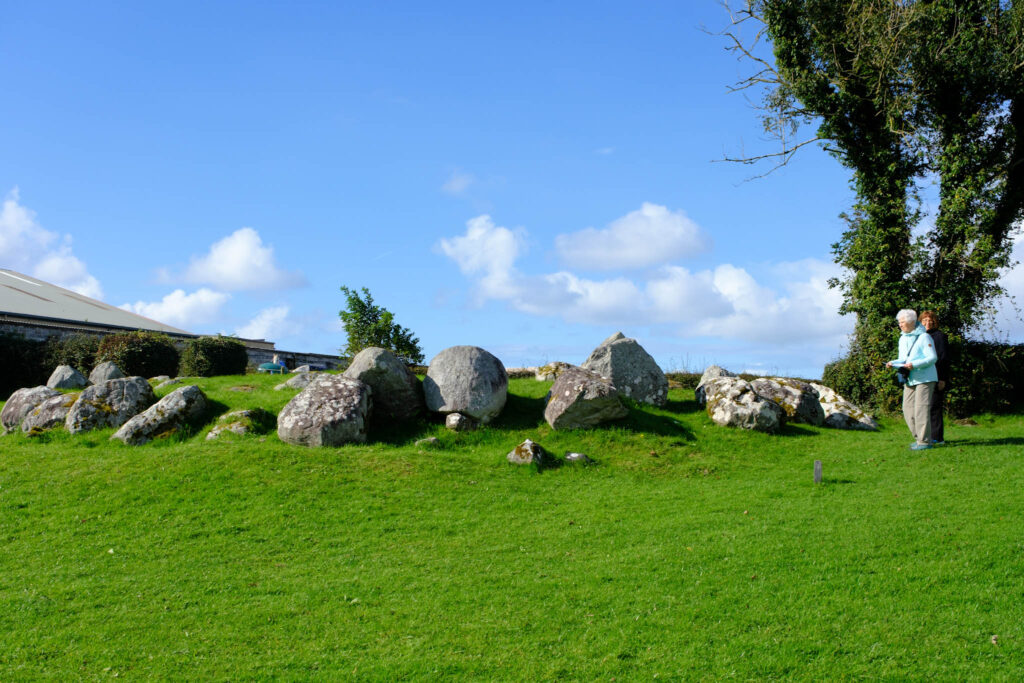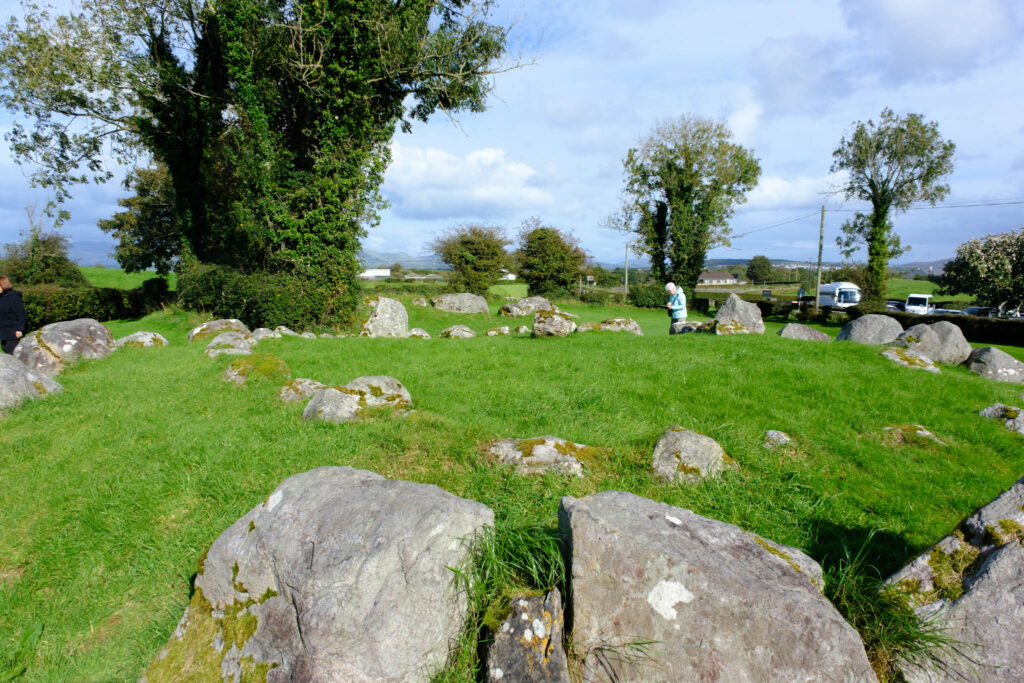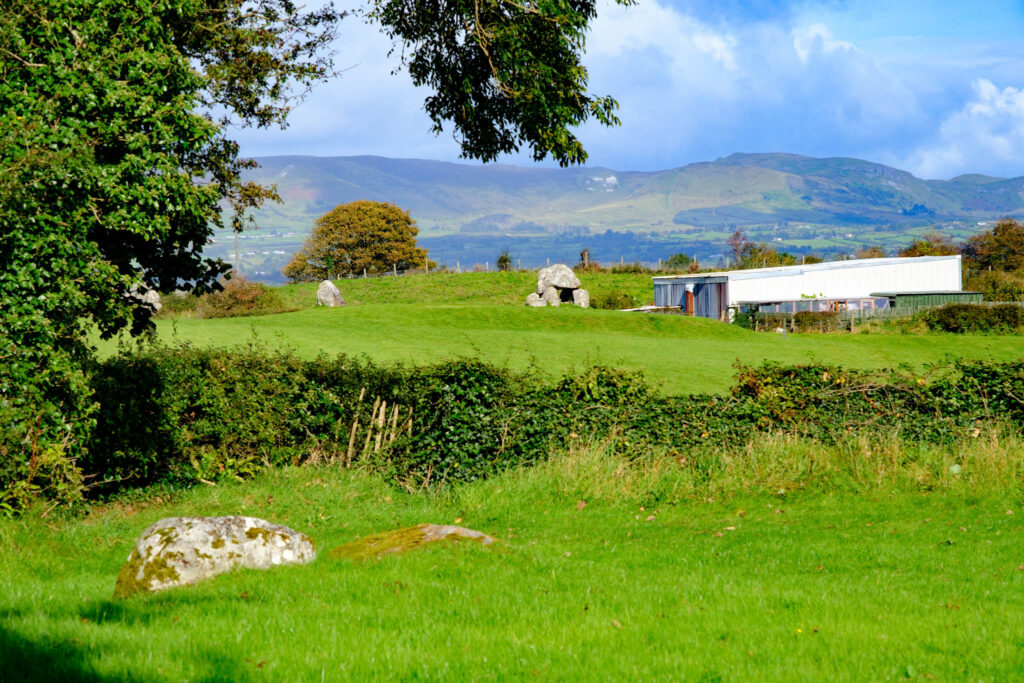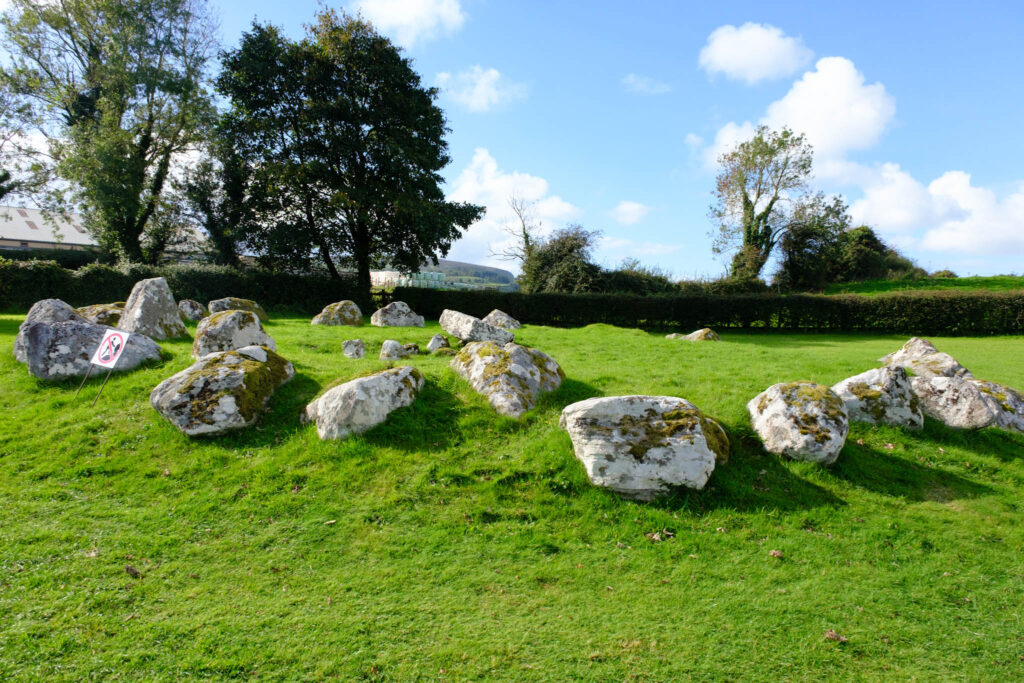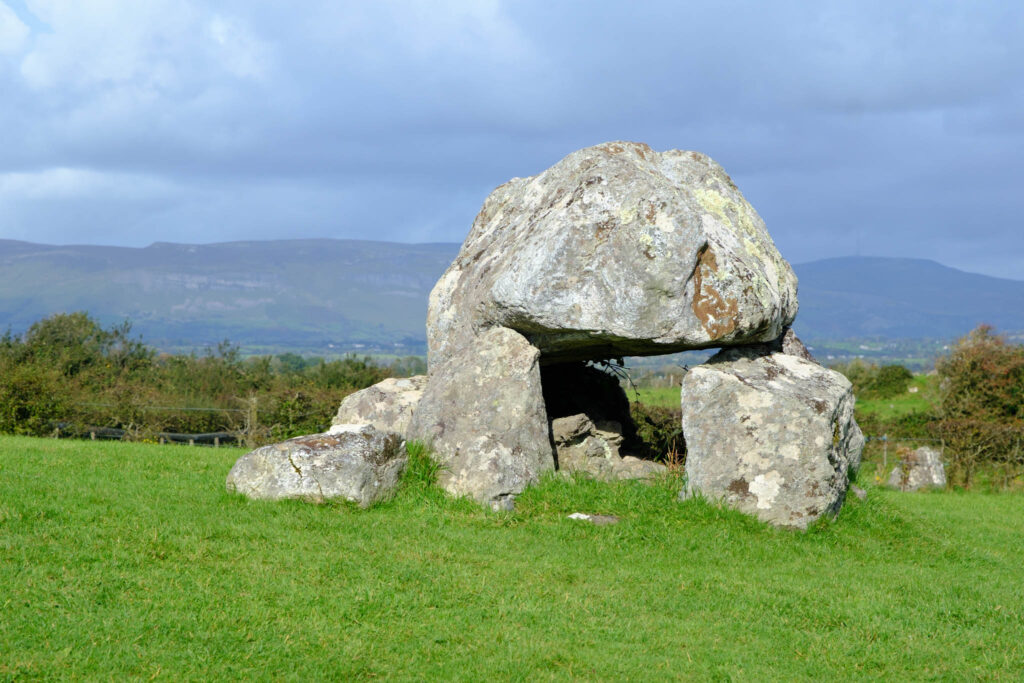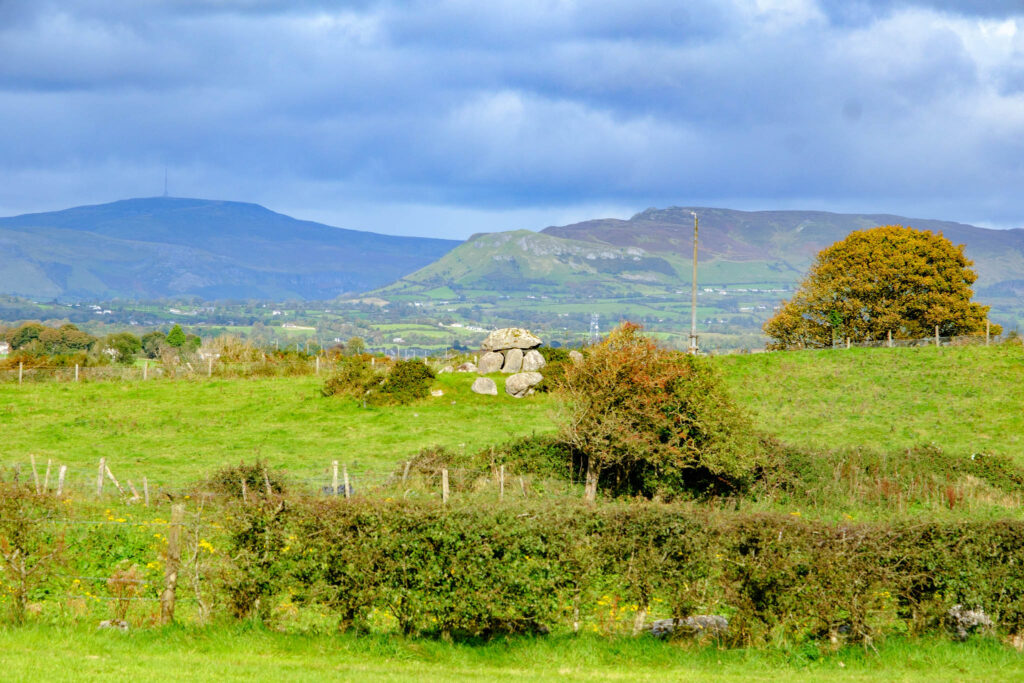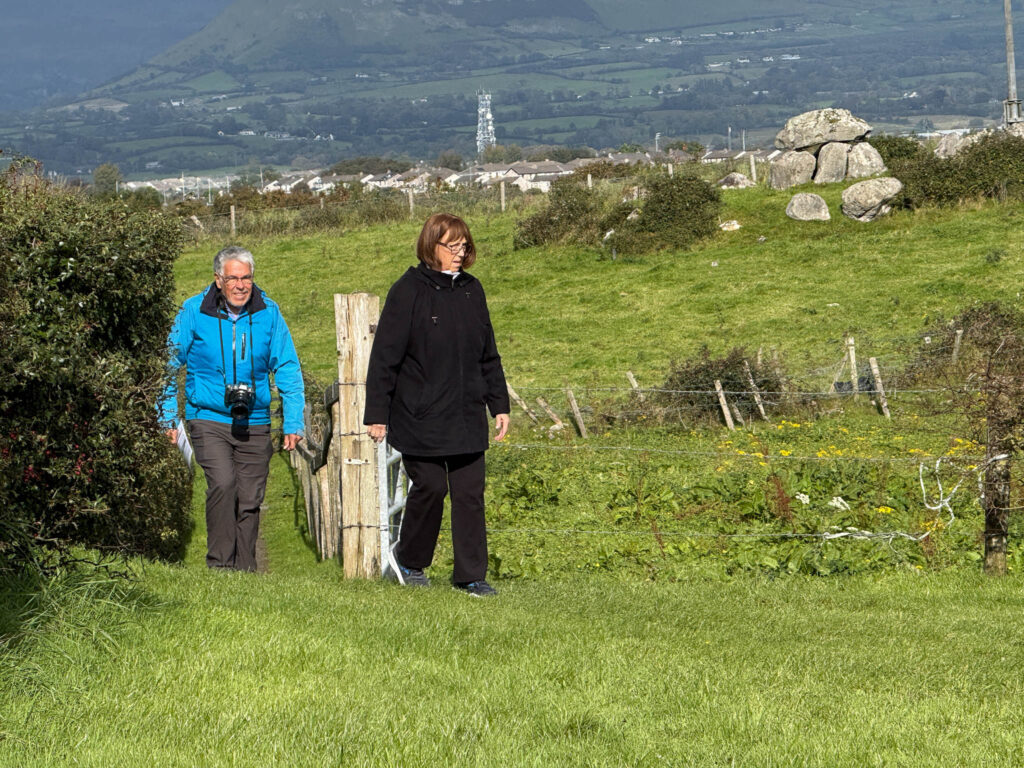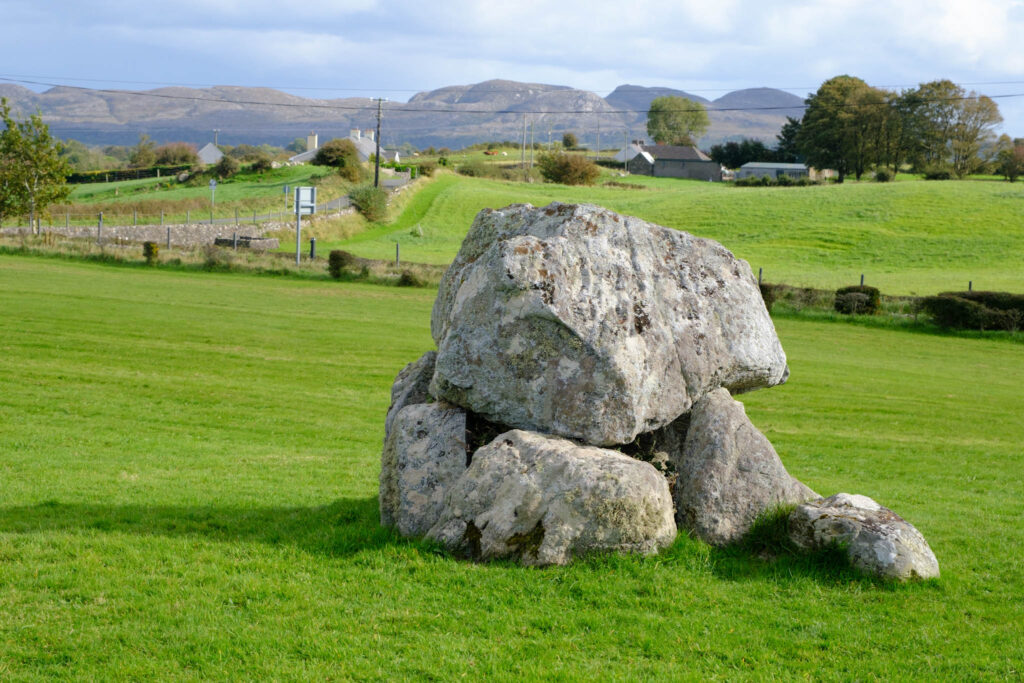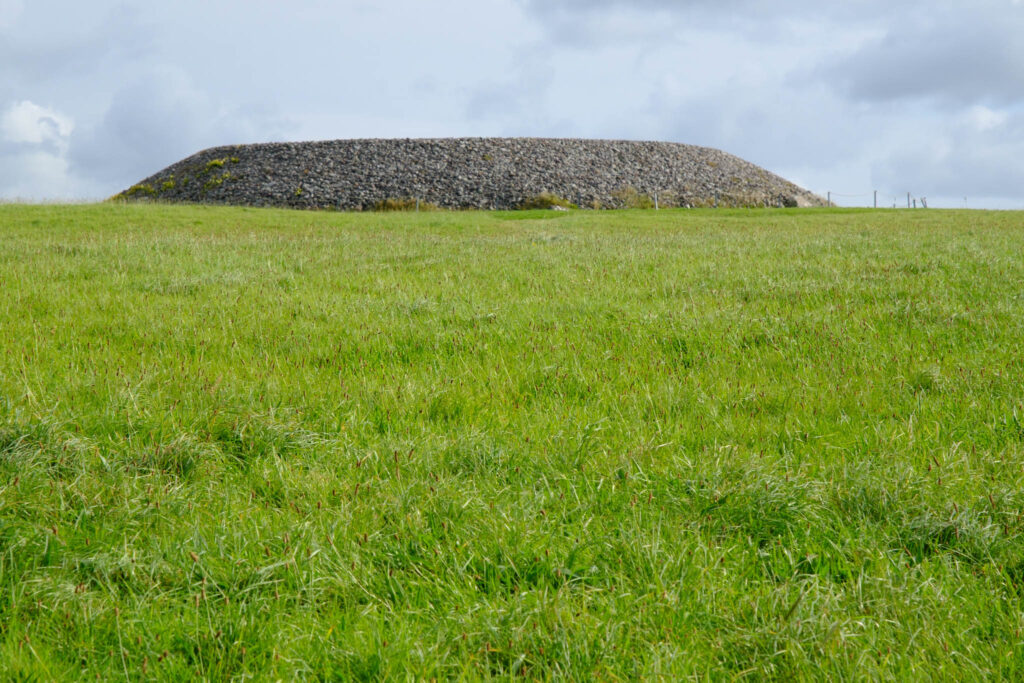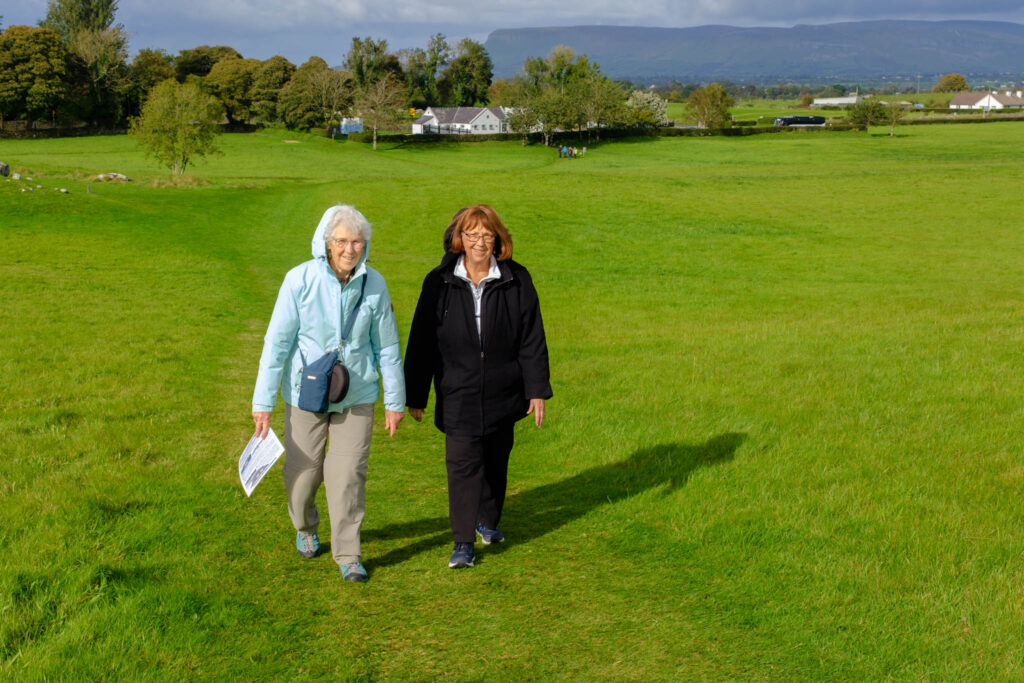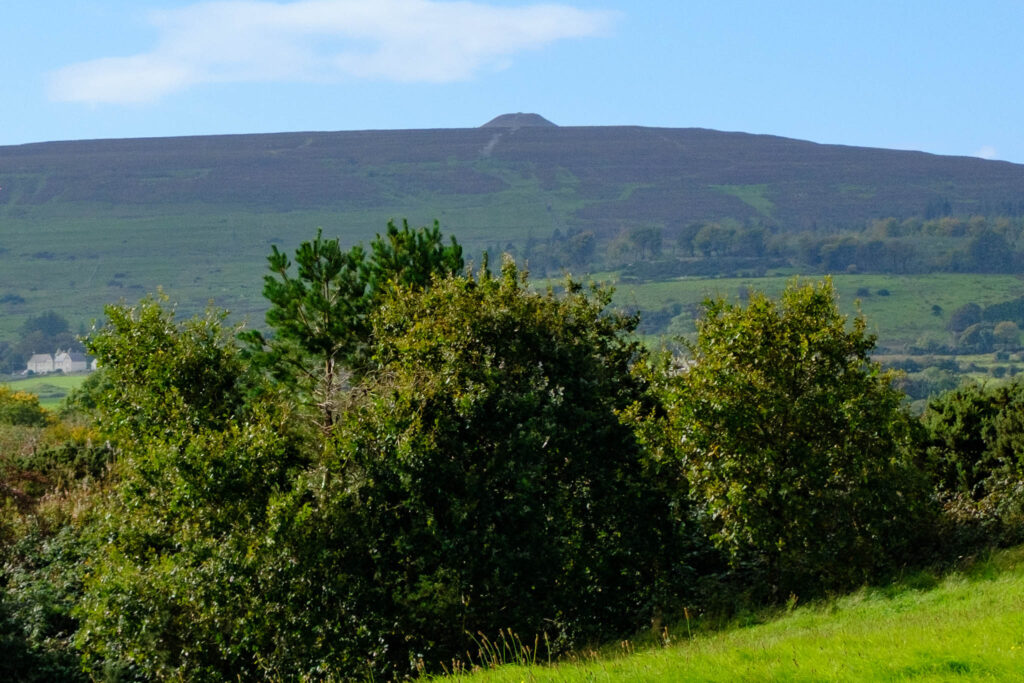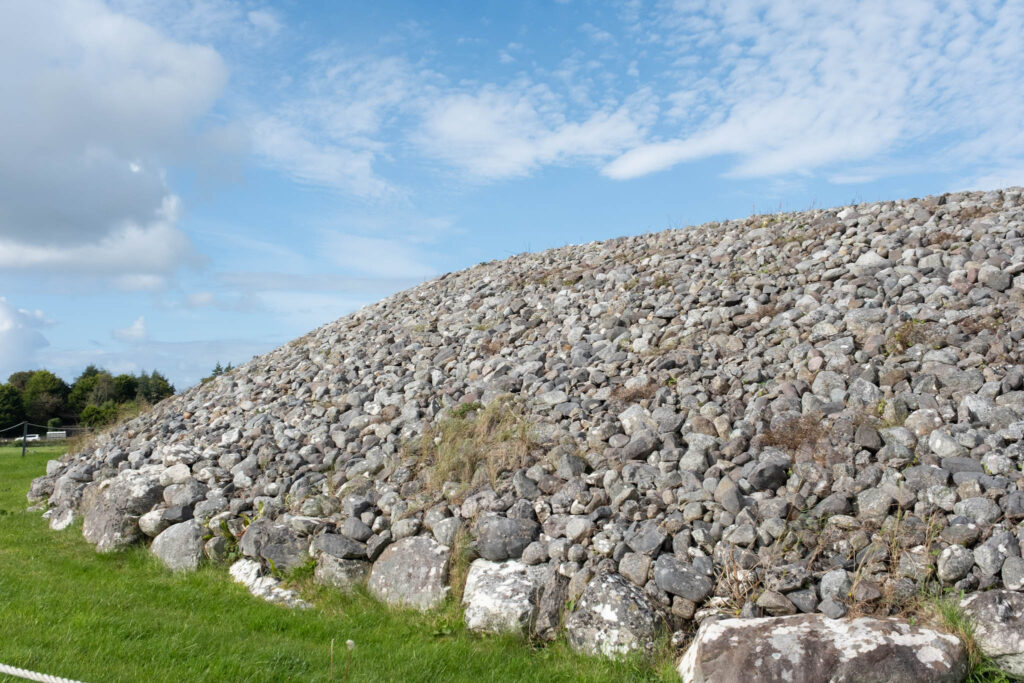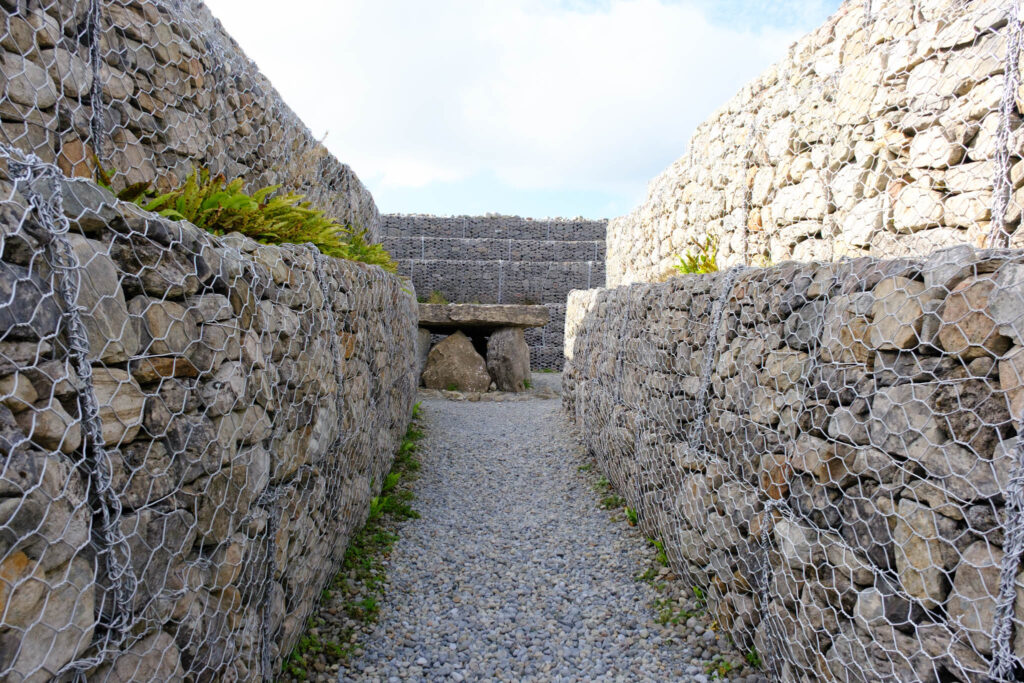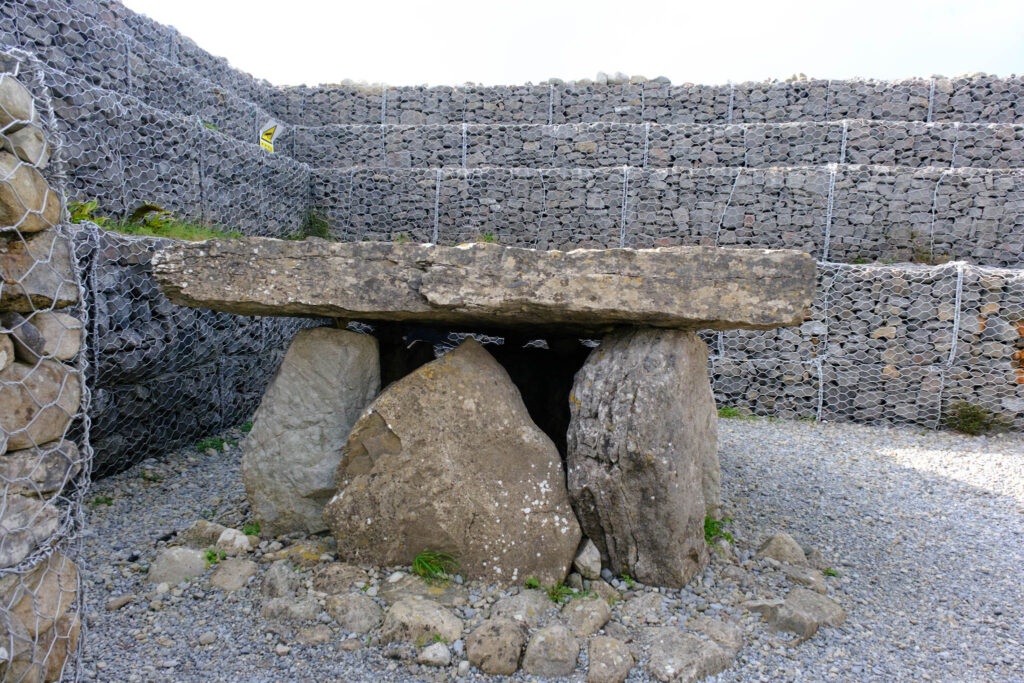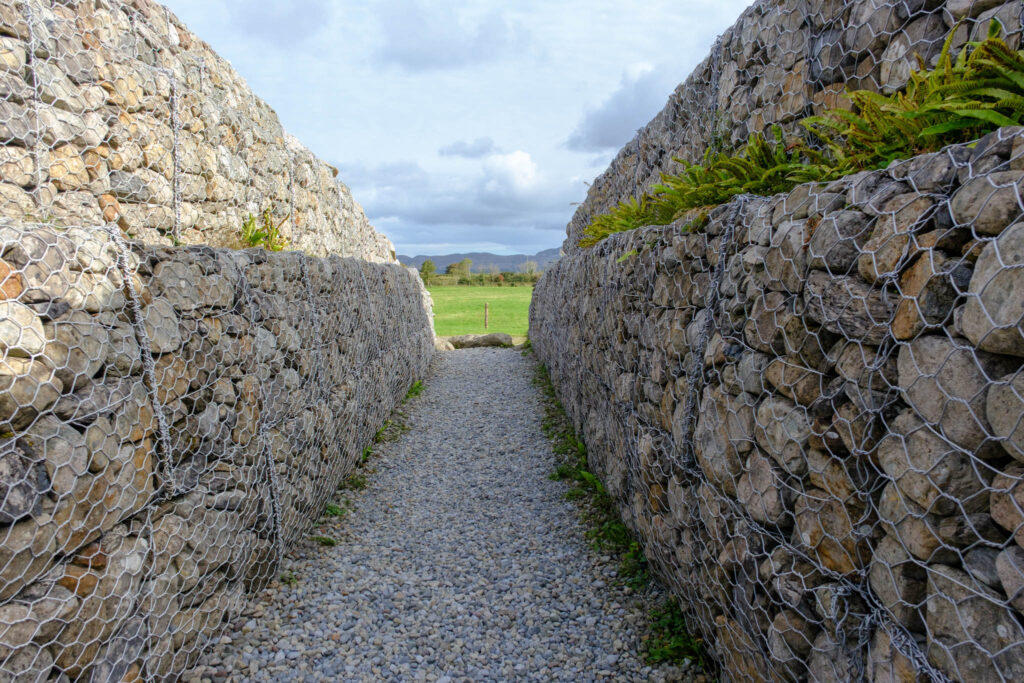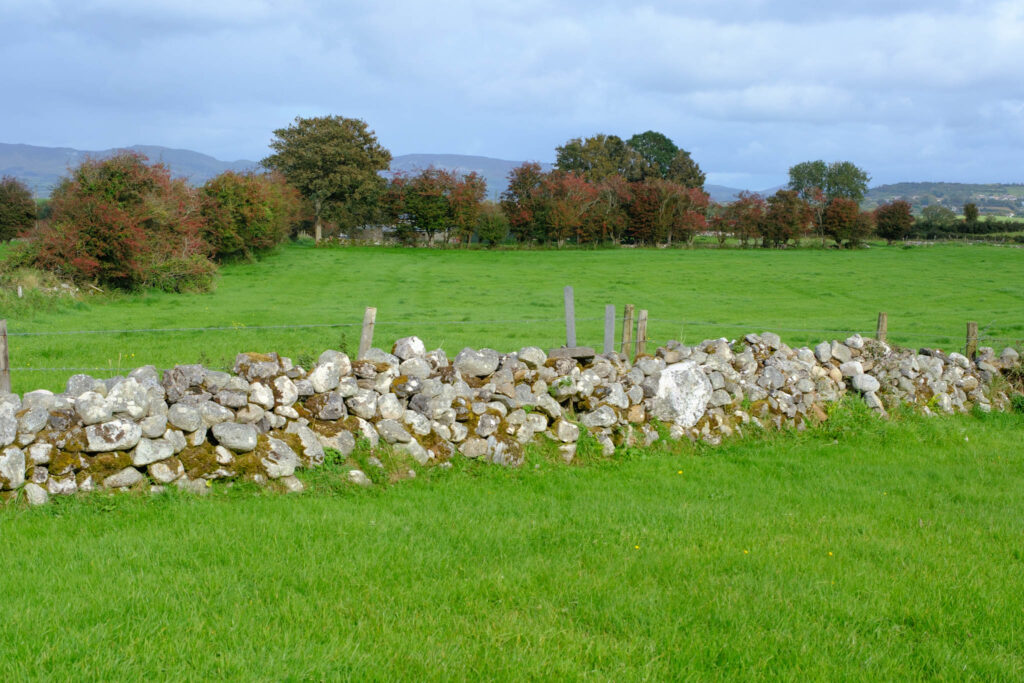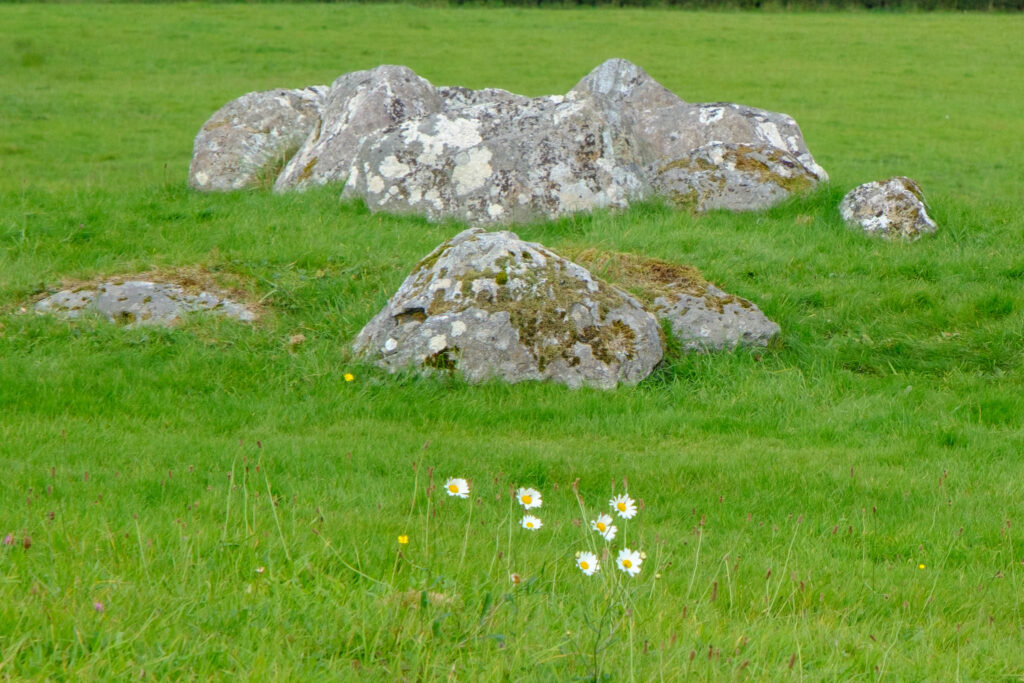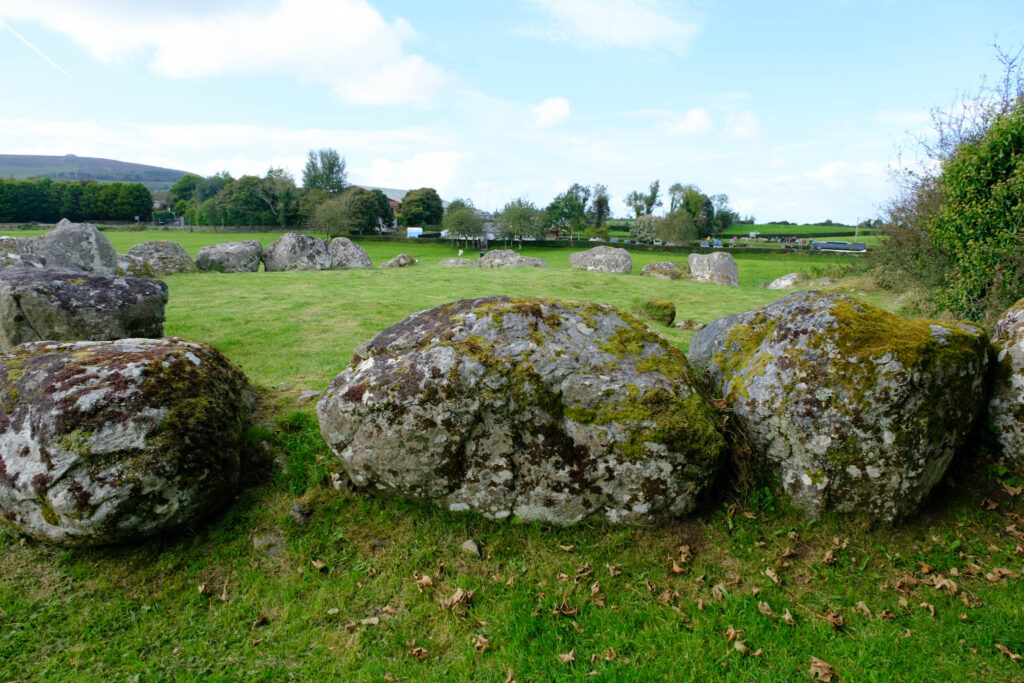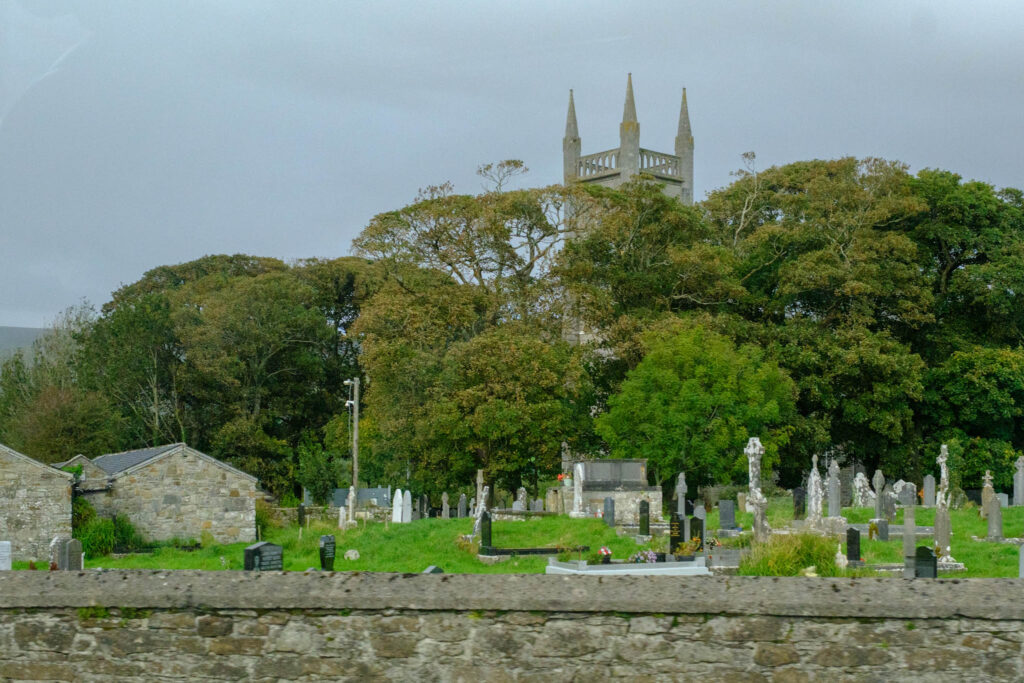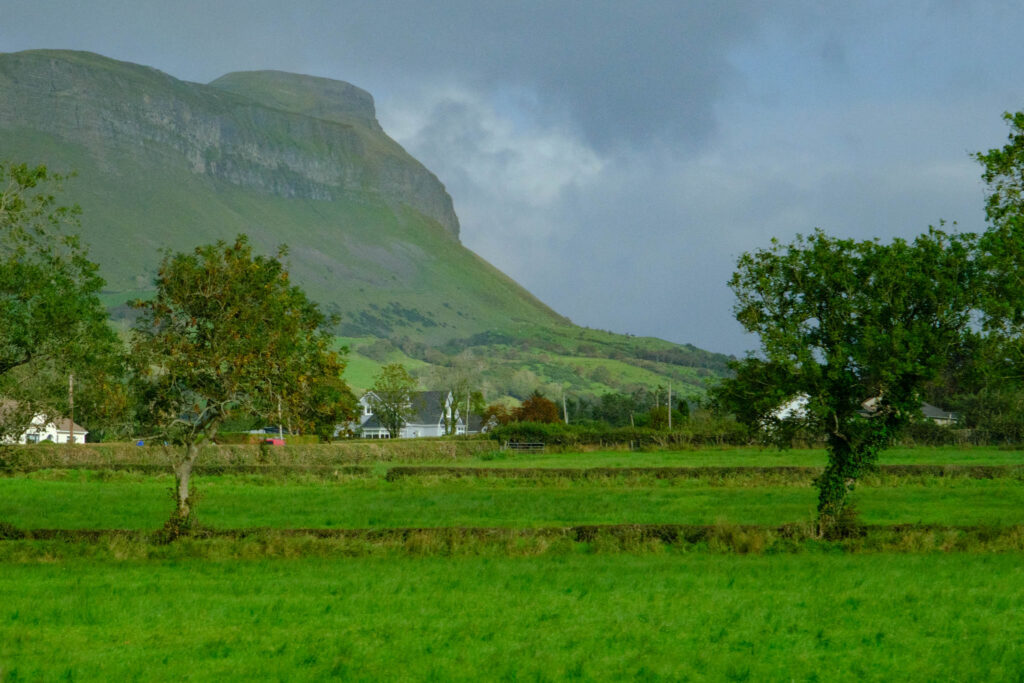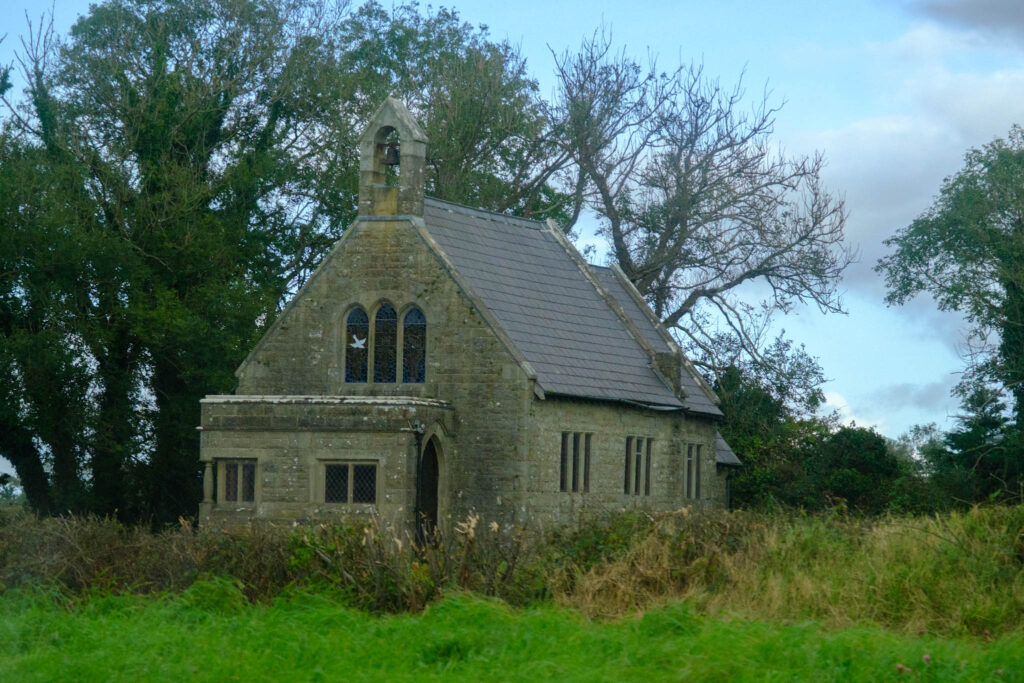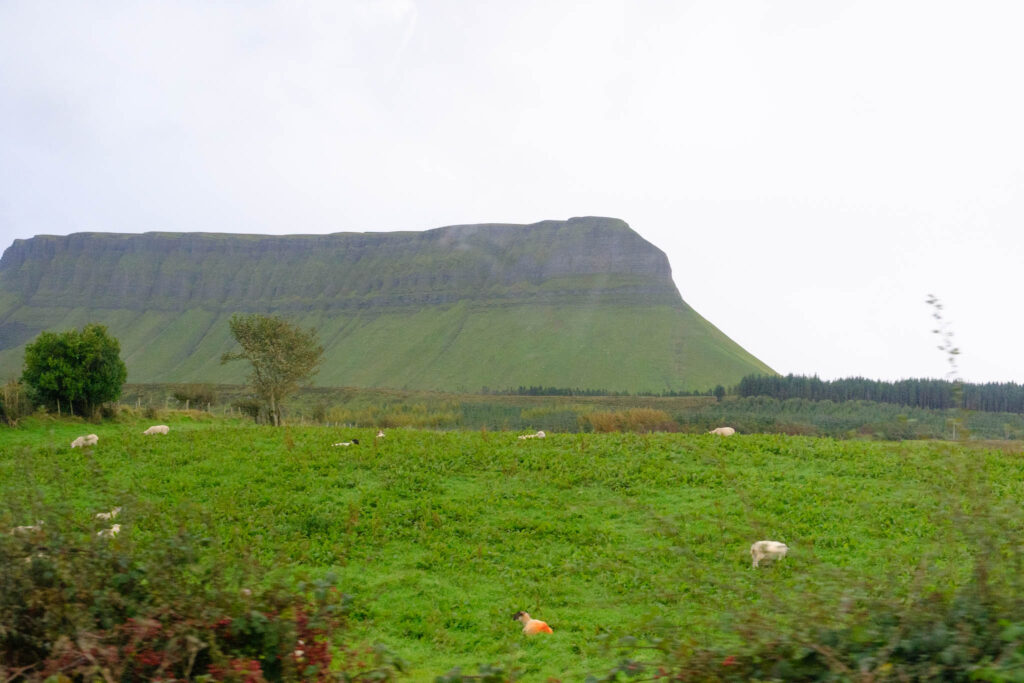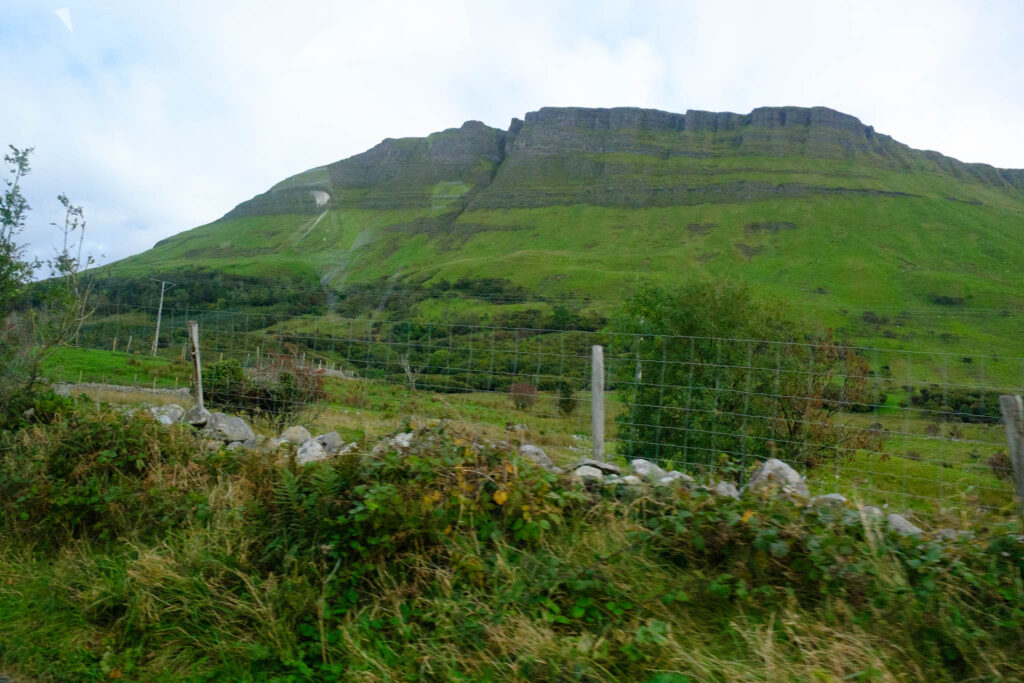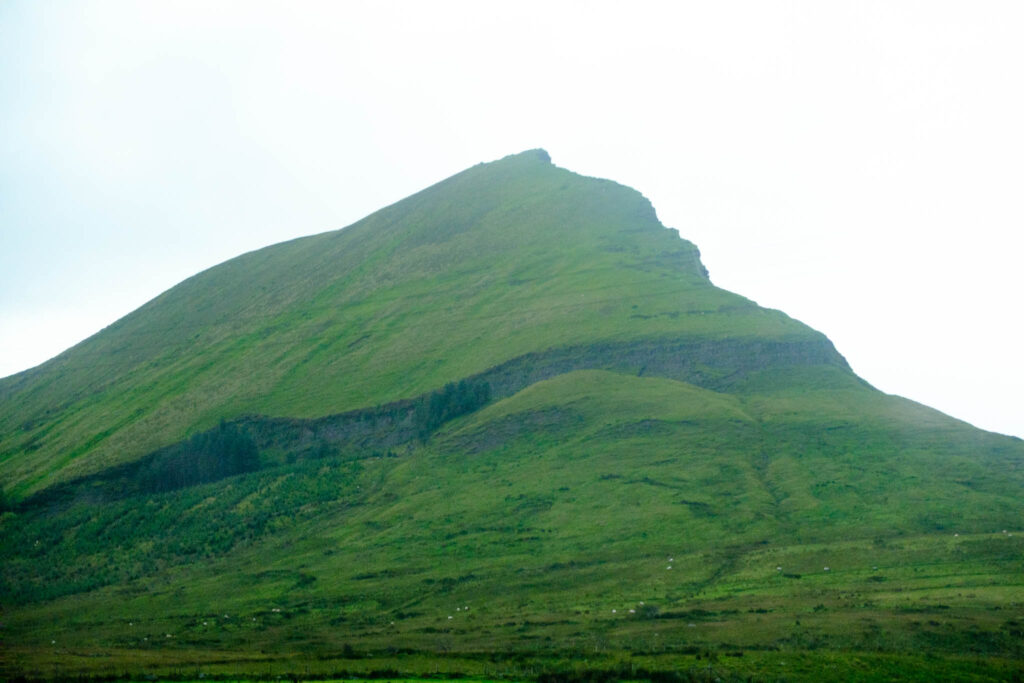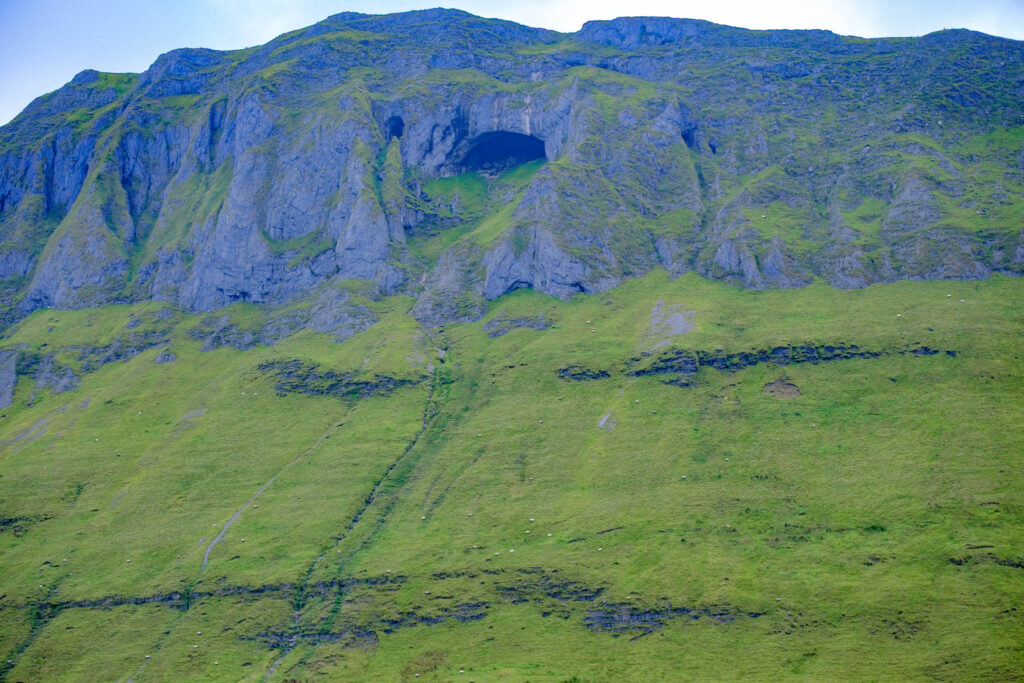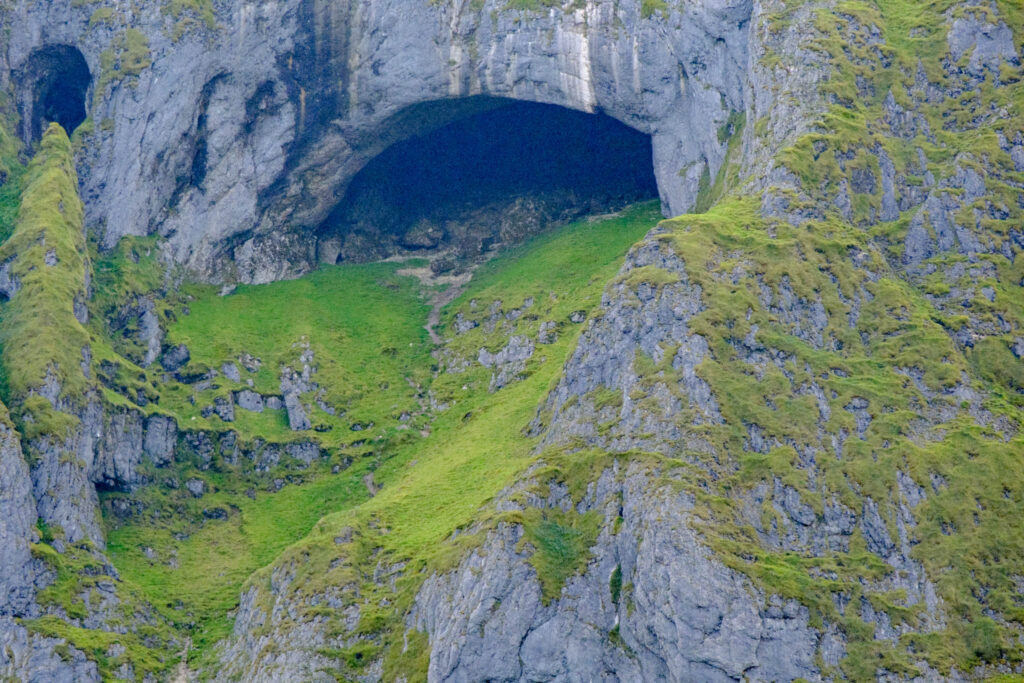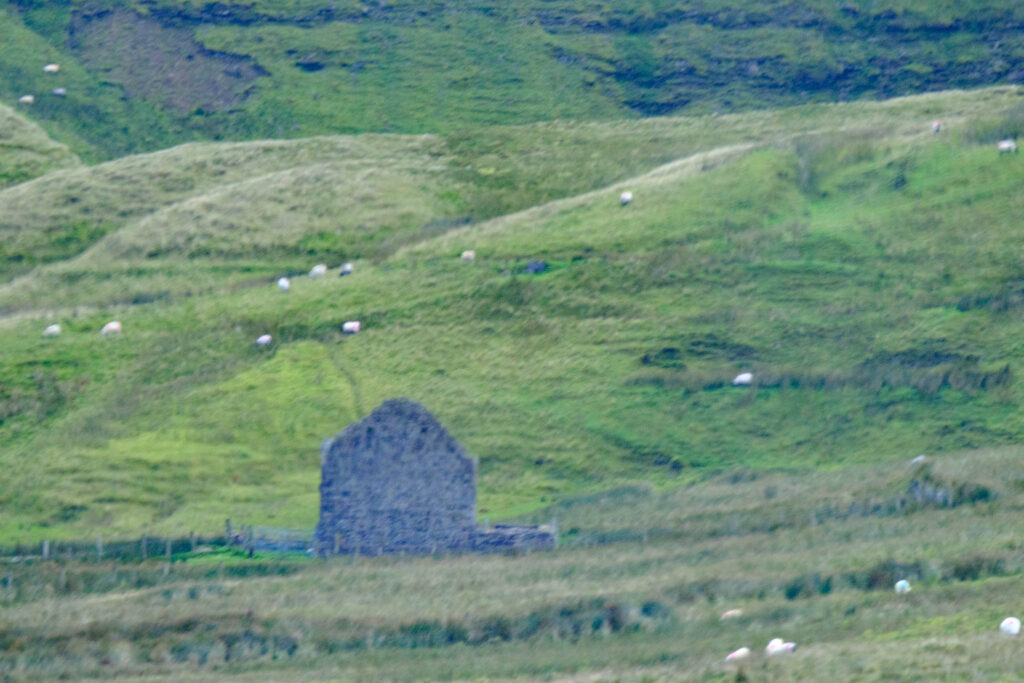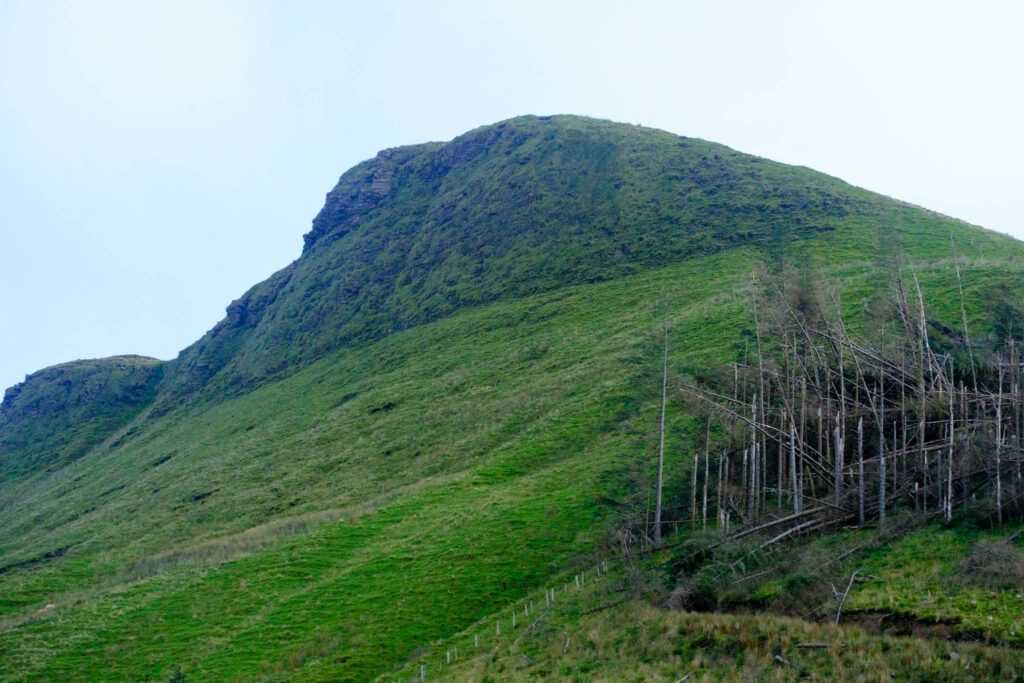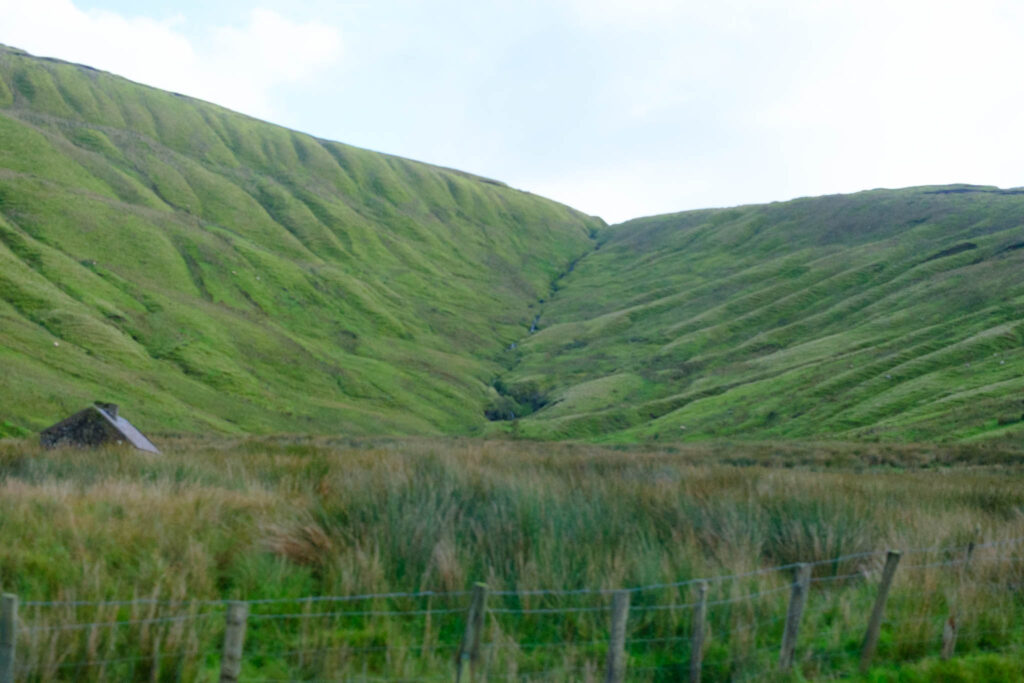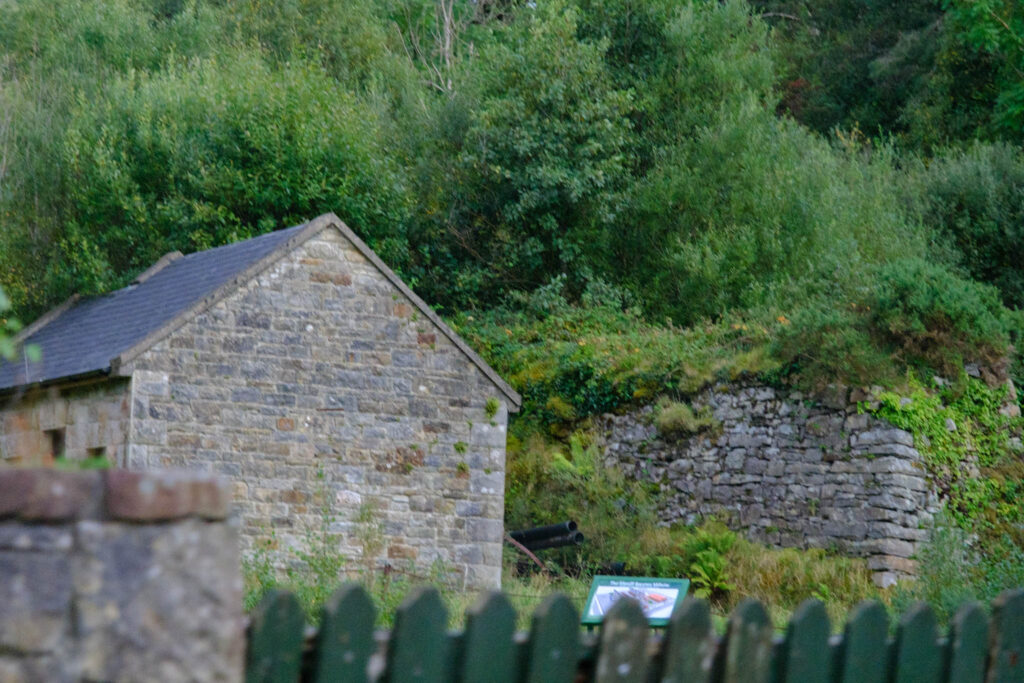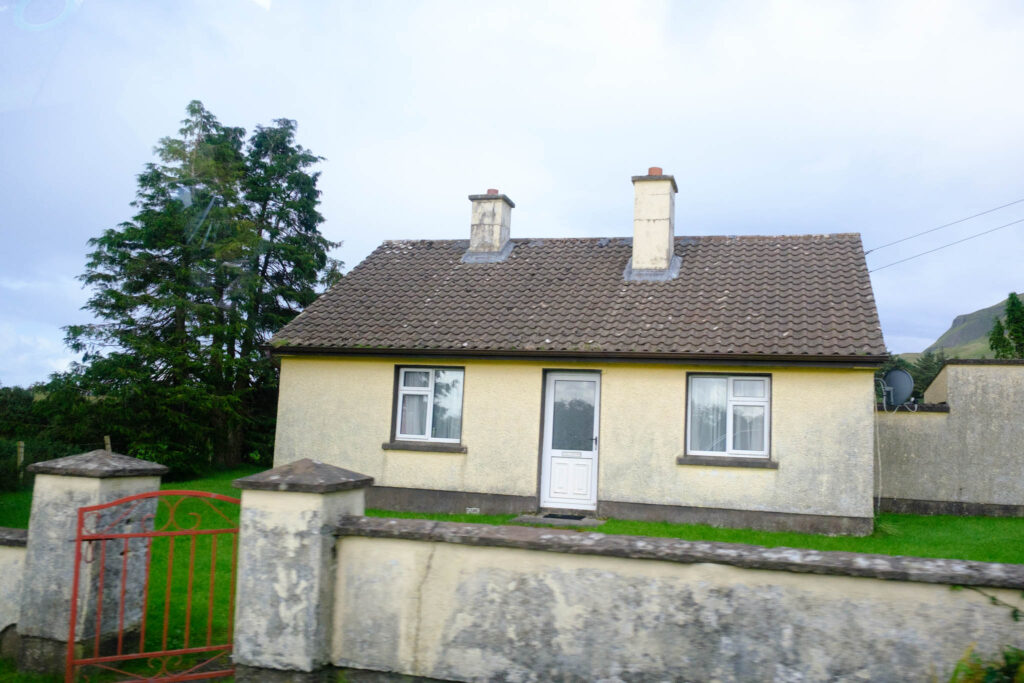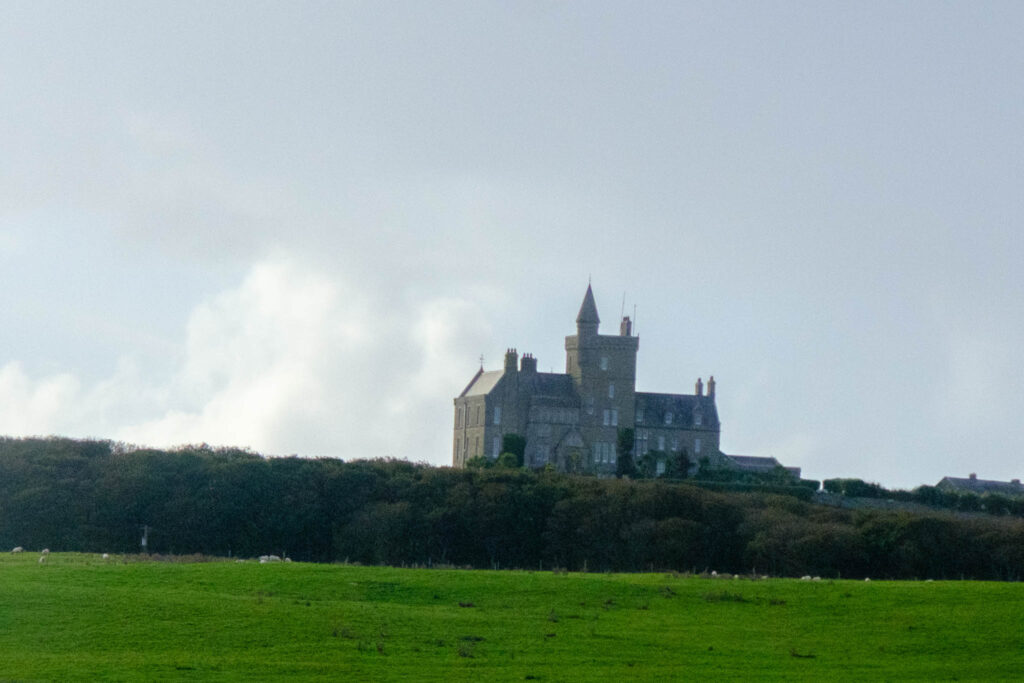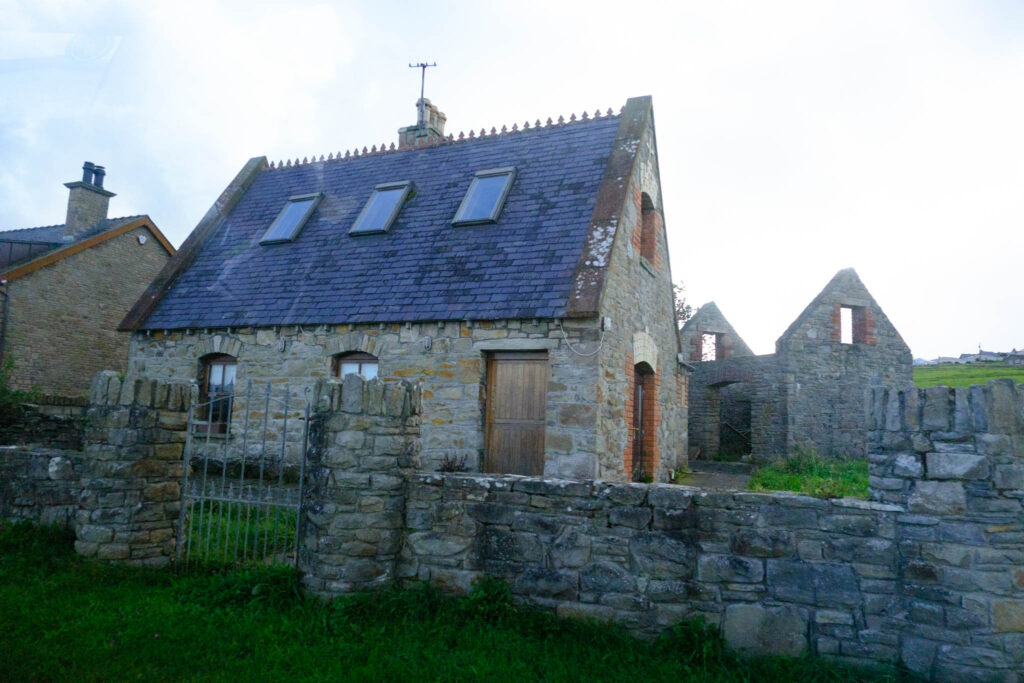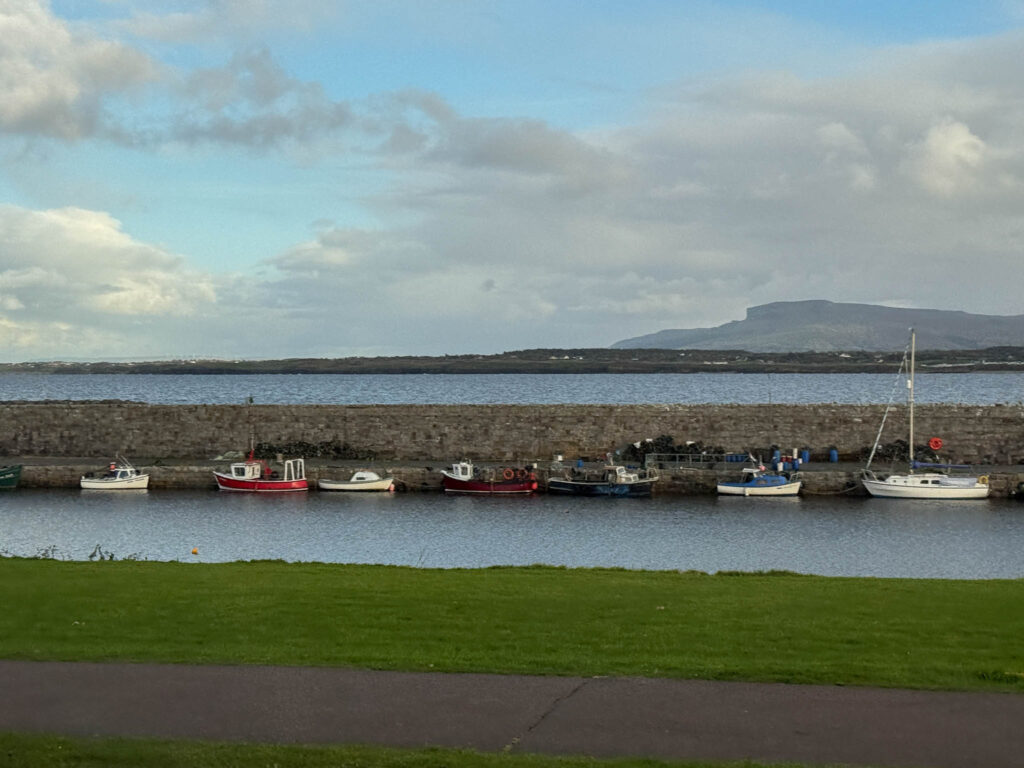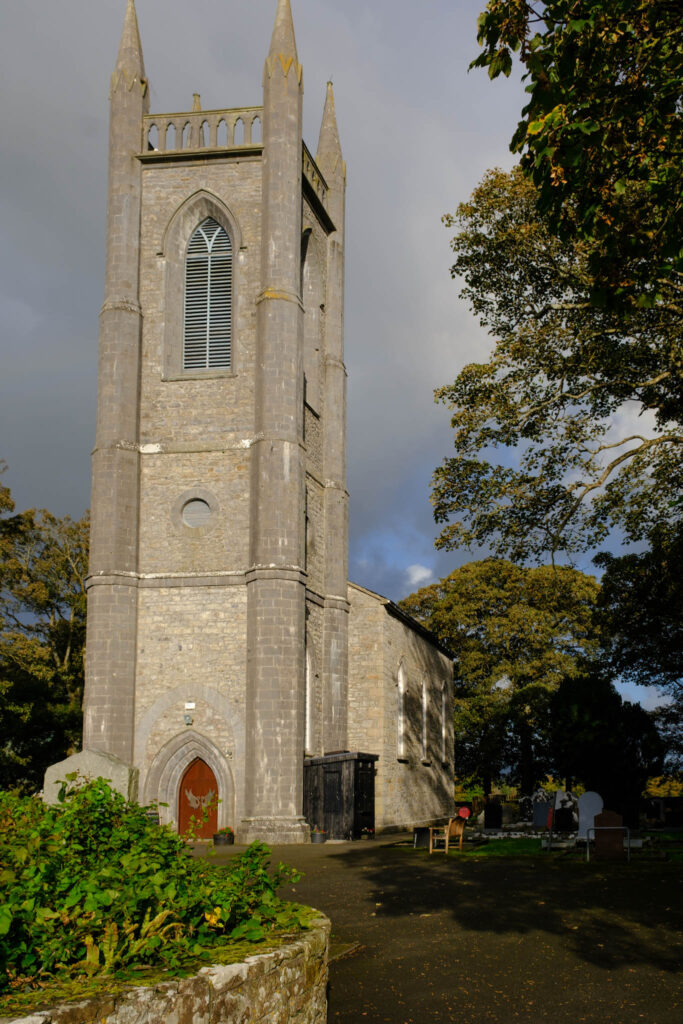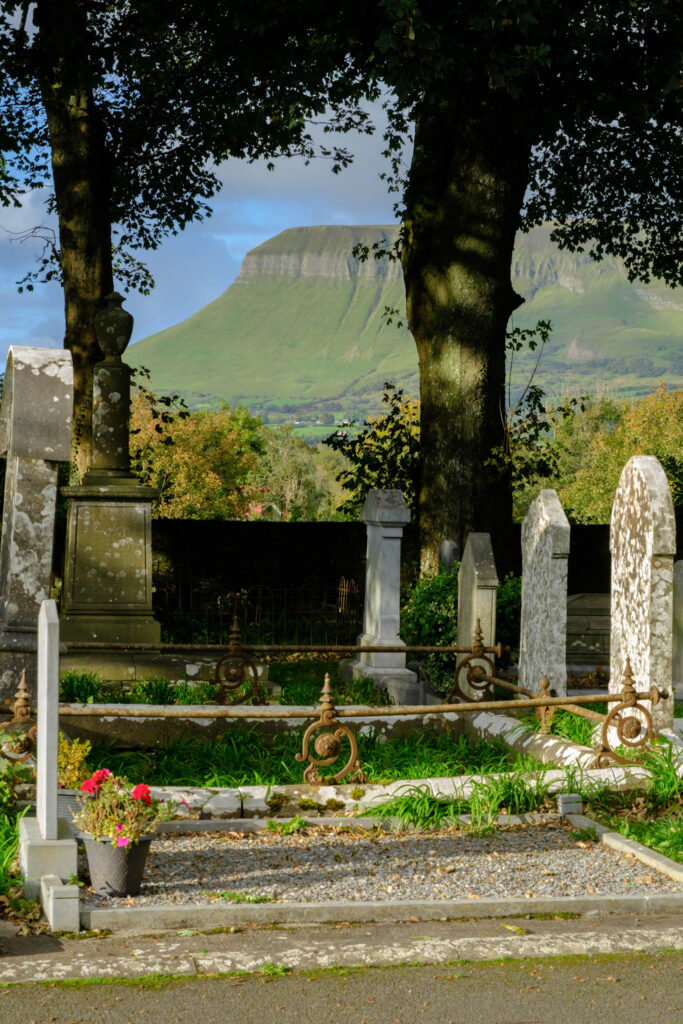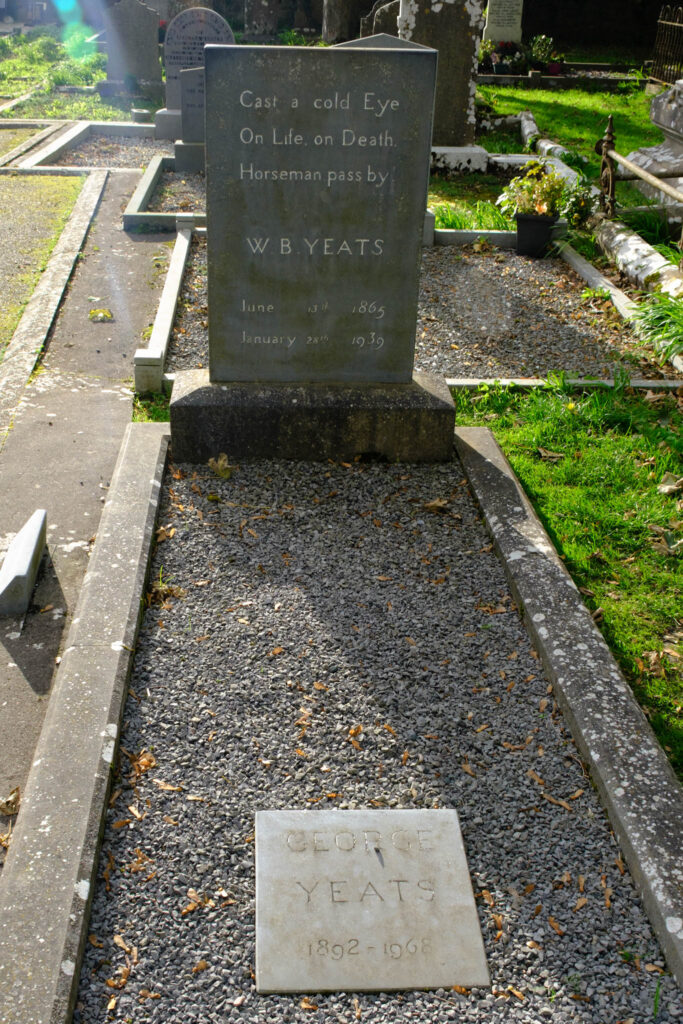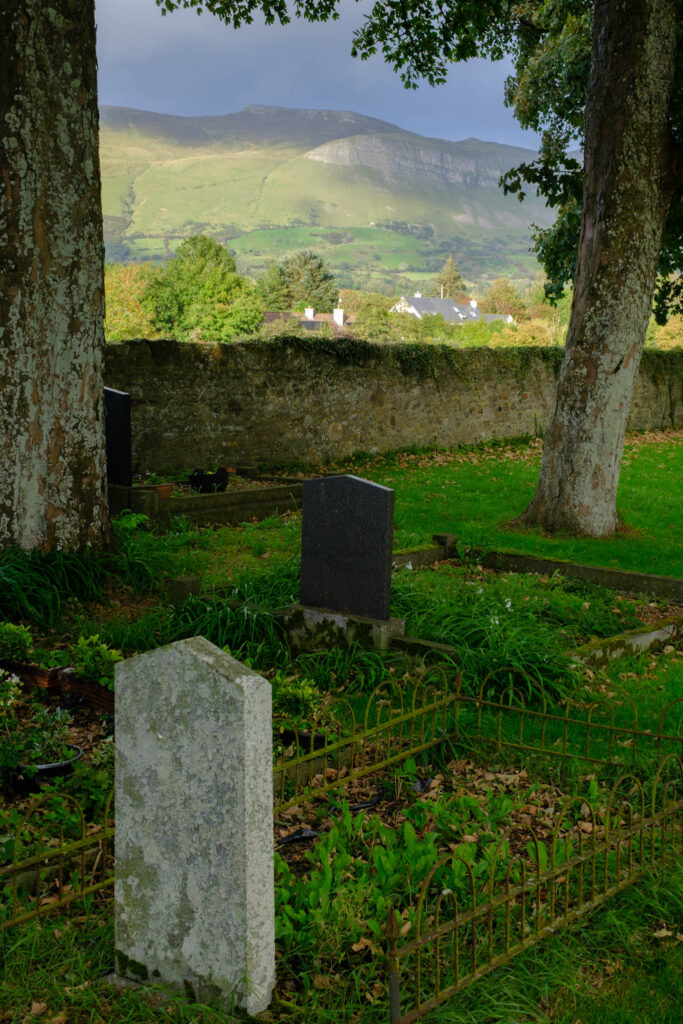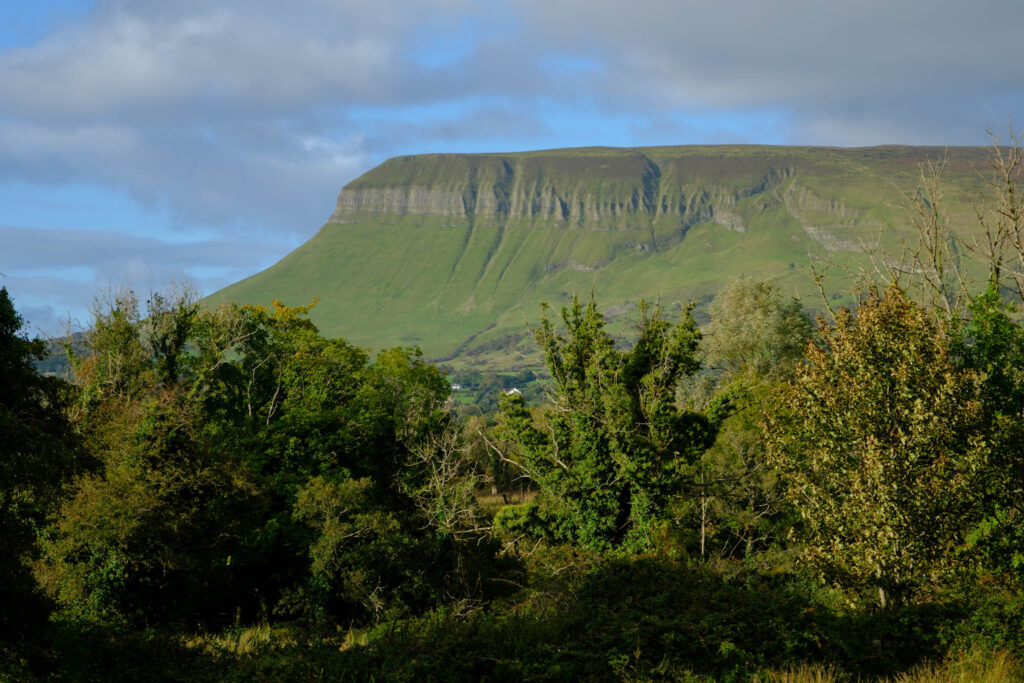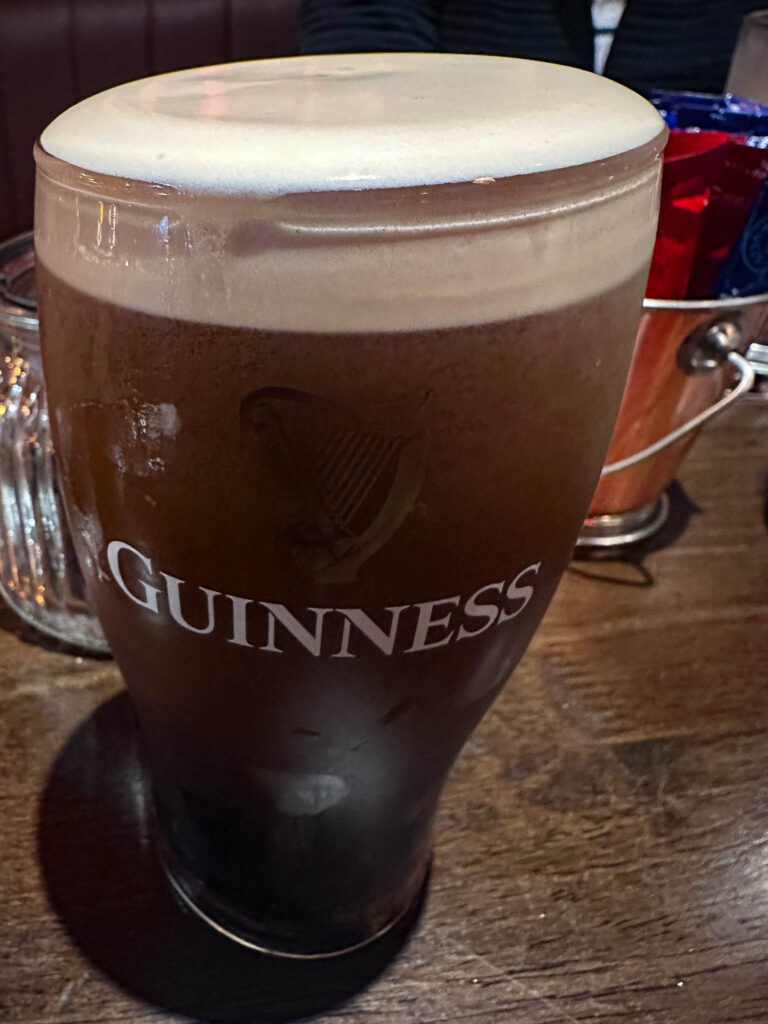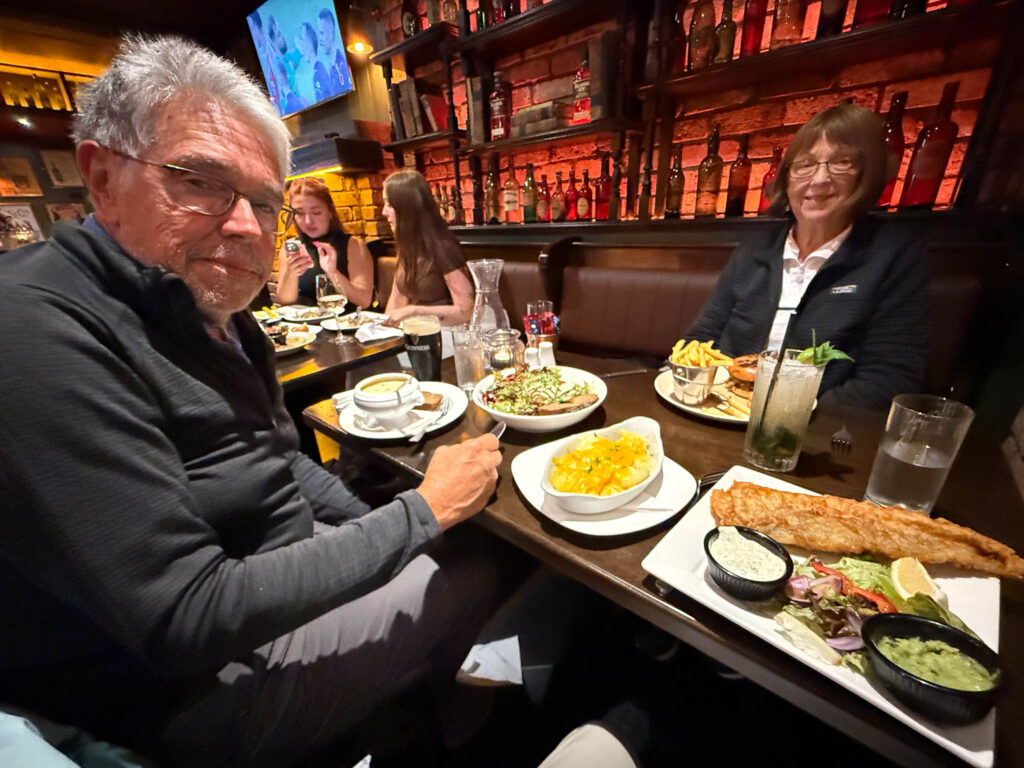You can’t get from one end of a country to the other without doing some traveling and, small as it is, there’s still some distance to be covered in Ireland. Today we made it north to Sligo and had some interesting stops along the way.
The first was Cong, County Cork. We were immediately struck by the cathedral ruins right by the side of the road. David agreed to our request for a walk around, during which we discovered Cong is famous for two things.
First, of course is the Abby. The local king, back in the seventh century, built a Christian monetary here. It was made of wood and burned down. It was reconstructed of stone in the early 12th century. The Normans knocked that down and rebuilt it in the early 13th century. It was a huge building complex in its day and the ruins are fun to walk through.
John Ford made a move in Cong back in 1951, “The Quiet Man,” starring John Wayne and Maureen O’Hara. They give walking tours of town, pointing out where certain scenes were shot. We skipped that tour but Judy and Nancy scored chai lattes. The movie has fallen out of favor since it fails to meet the moors of modern times: John Wayne’s character spanks Maureen O’Hara in the movie when she misbehaves.
We arrived in Sligo at 1:30. Our room was ready, so we dropped our bags and headed for lunch. The apartment is pretty well located and is cute but on three levels: living, bedroom #1 and bedroom #2. Can’t wait for the call of nature tonight since the bathroom is on level 2 and Judy and I are on level 3.
We dined at Gracie’s Pub, chosen to honor Nancy’s granddaughter, Gracie. The food didn’t do any lastg damae, but Gracie is a better cook than whoever was on duty this Sunday afternoon.
Just outside of Sligo is the Carrowmore Megalithic Cemetery, the oldest Neolithic site in Ireland. There are fifty-plus rock formations that served as burial sites for people living in 3700 BC, almost 6,000 years ago and 1,000 years before the first Egyptian pyramid was constructed. They’ve found human and animal bones that permit dating and give hints as to burial customs. But of course it is impossible to know in detail what went on back then. Interesting, and the mounds are perched on an open field that gives great views of the surrounding mountains.
Next we viewed Diarmuid and Gráinne’s Cave, which is located above the cliffs of Annacuna, which is at the back of the Gleniff Horseshoe in County Sligo. The mountains in the Horseshoe are quite dramatic. And of course where there is a cave there is a legend.
Seems Gráinne, daughter of the high king, was betrothed to an old guy whose name is pronounced something like MacCool. MacCool’s right hand warrior, the handsome, young Diarmuid, pledged to protect Grainne until the marriage could happen. But, as you might guess, Grainne and Diarmuid fell in love. Diarmuid wouldn’t act on his love because of the oath he took to MacCool. Eventually, the lovers died in the cave. How they died is up to the story teller. Maybe it was a wild animal. Maybe it was MacCool.
We passed by the place where Lord Mountbatten and his 14-year-old grandson were killed when their fishing boat was bombed by the Irish Republican Army (IRA) in August of 1979. We saw Mountbatten’s estate and summer home not far from the Gleniff Hourseshoe mountains. This was one of many bombings during the thirty-year Troubles period. It hit close to the royal family – he was related to the queen.
And finally, we stopped at the church where W B Yeats, the Irish-born poet, whose gravestone reads:
Cast a cold Eye
On Life, On Death
Horseman pass by
Back home in Sligo, David dropped us near the river where we chose a pub from a plethora of eating establishments located there.
Tomorrow, We’re off to Derry with some serious mountain sightseeing on the way. This, then, is our last night in the Republic of Ireland. Tomorrow it will be Northern Ireland, part of the United Kingdom. Pound Sterling rather than Euros. Miles rather than Kilometers.
